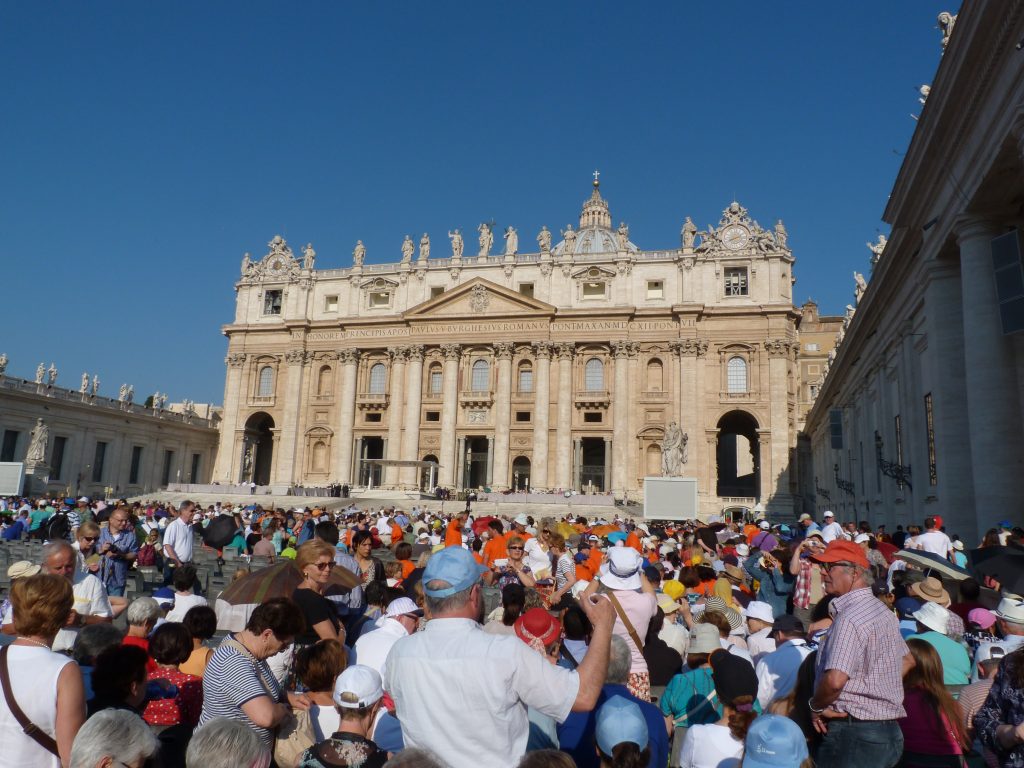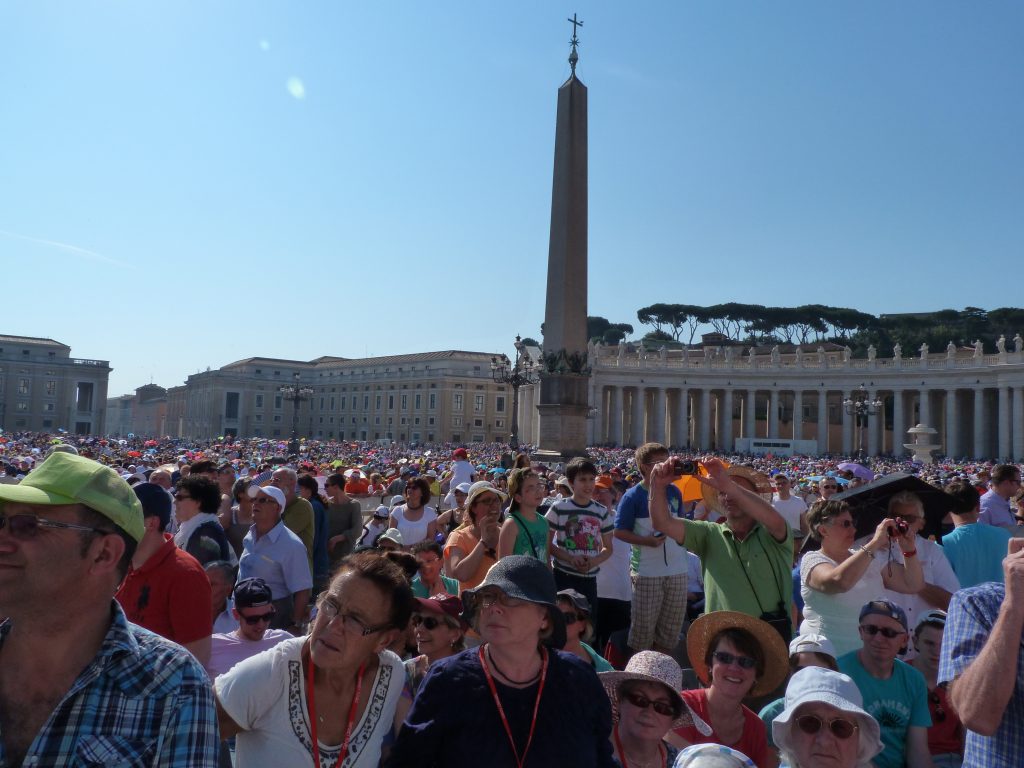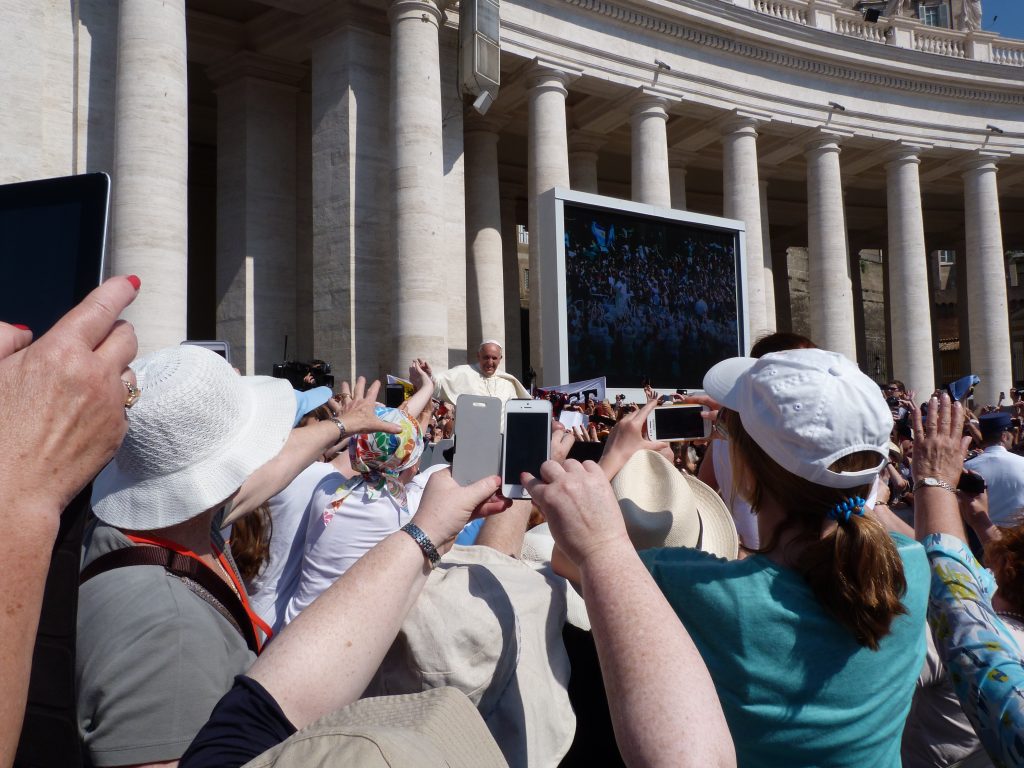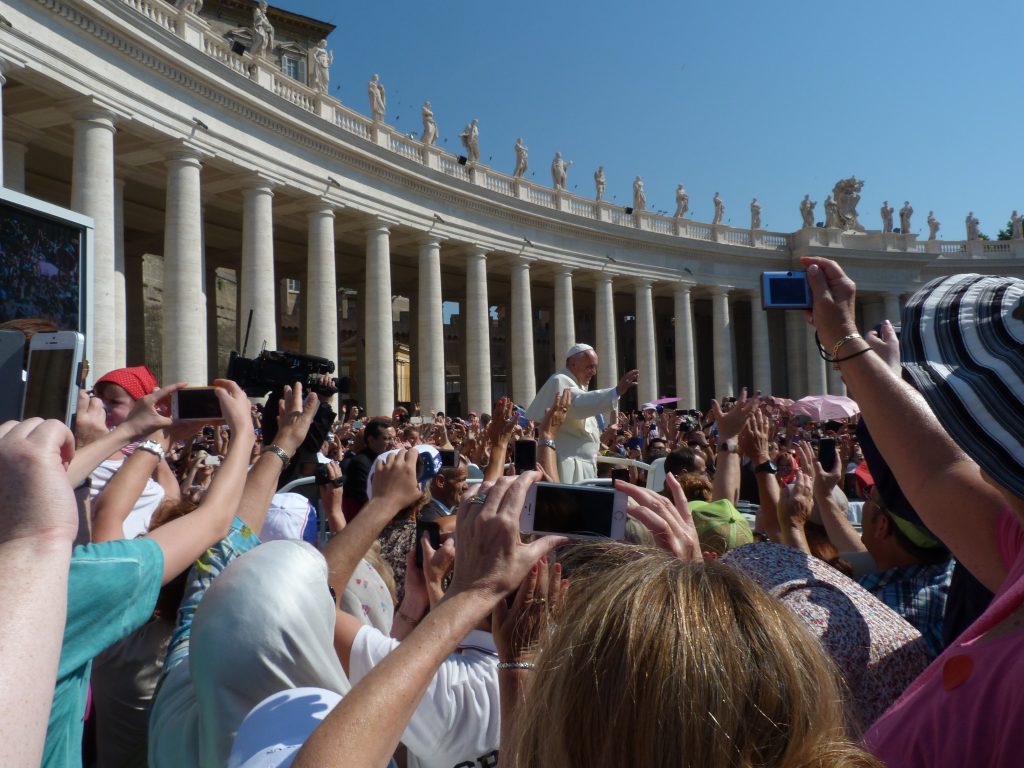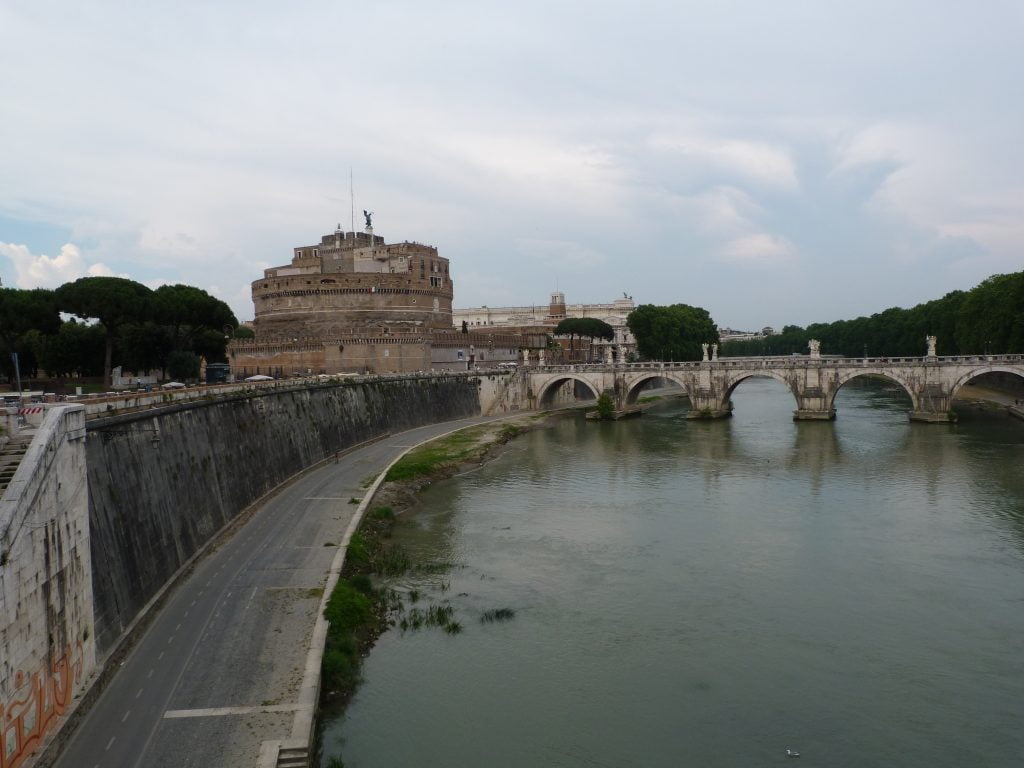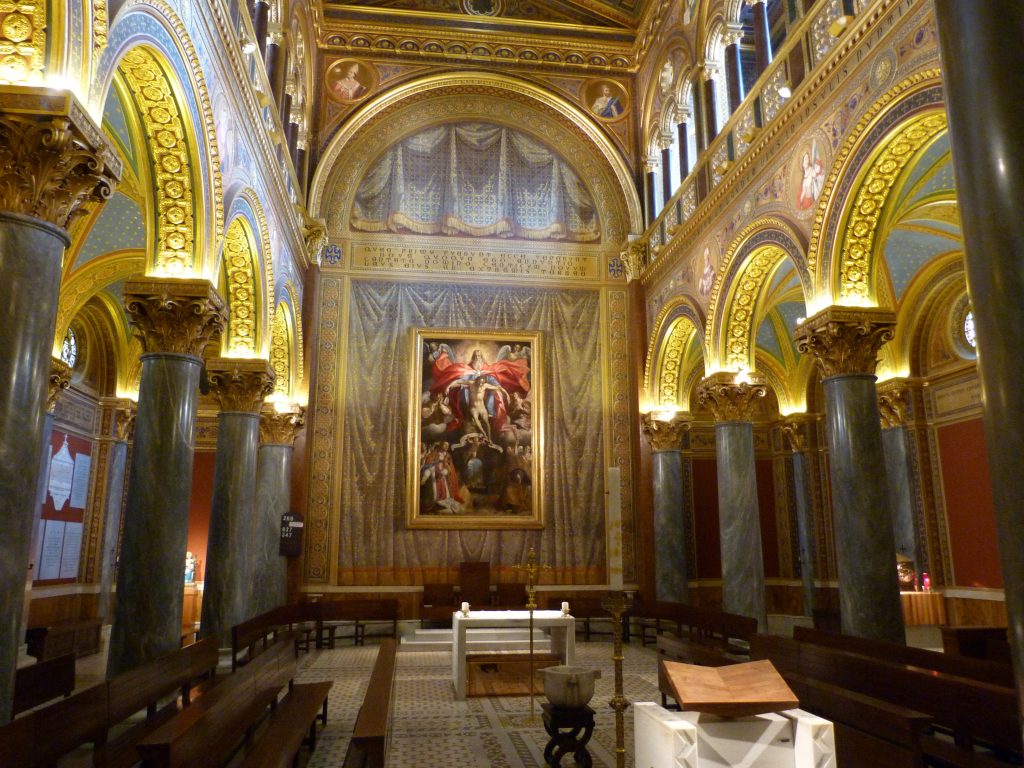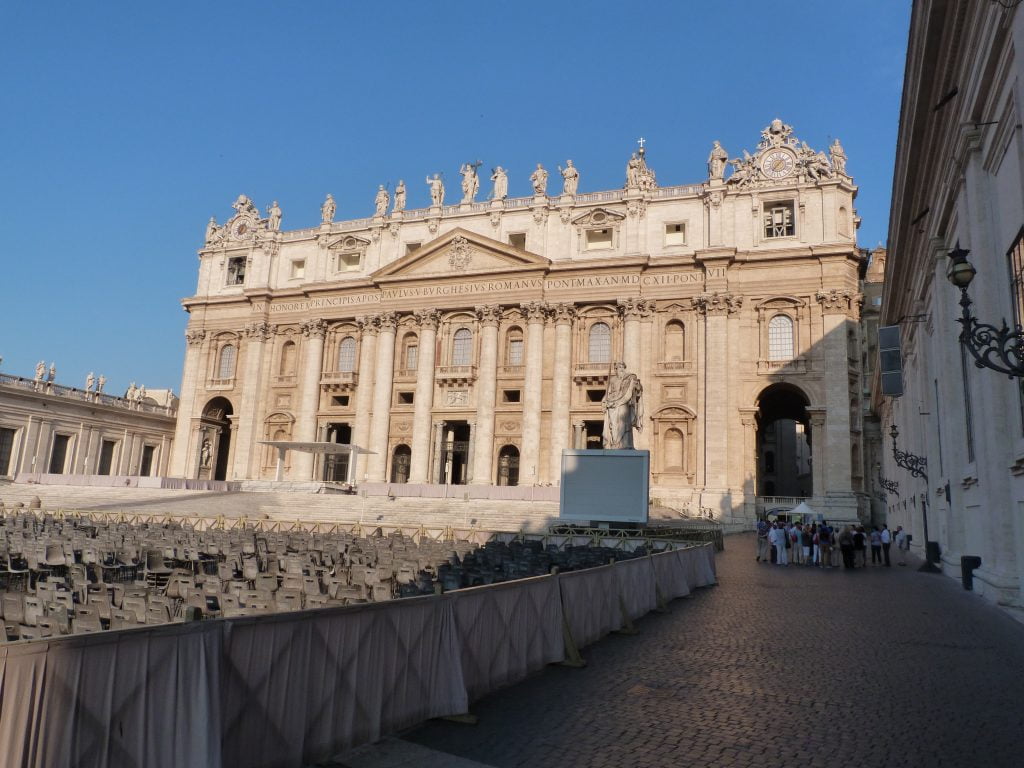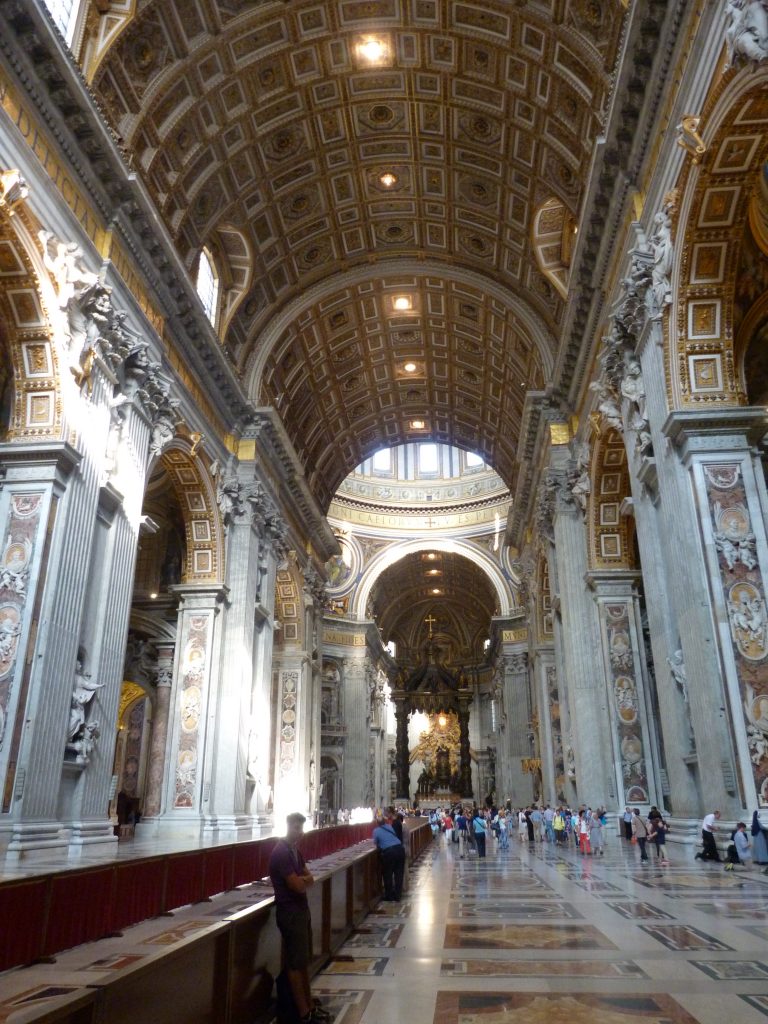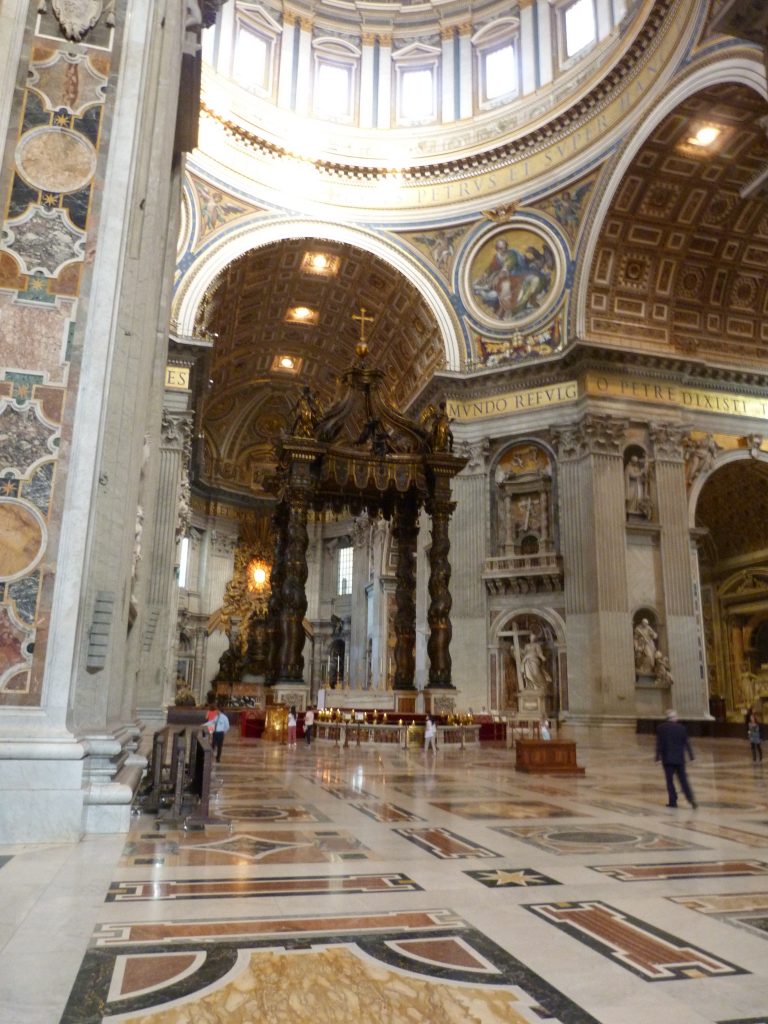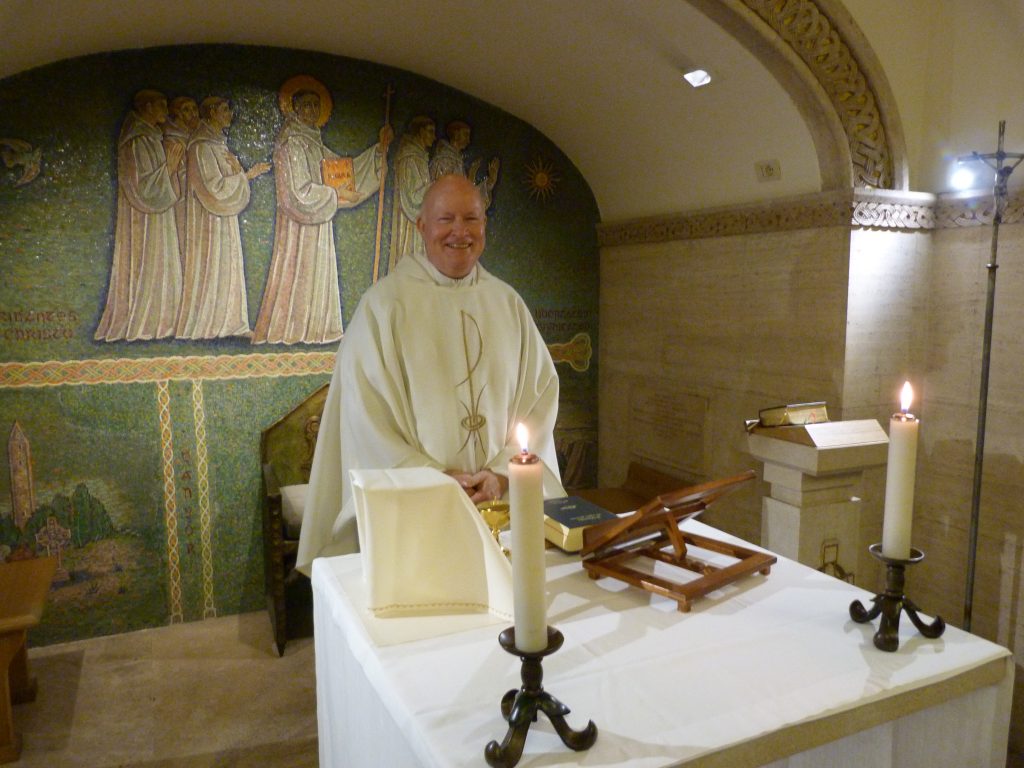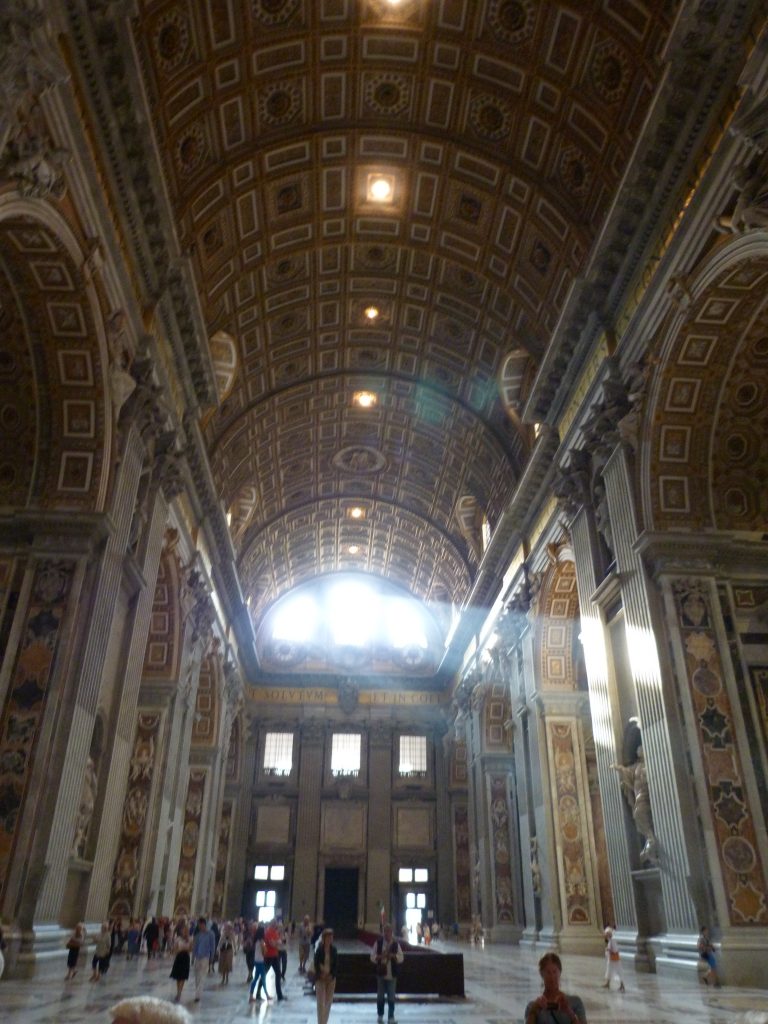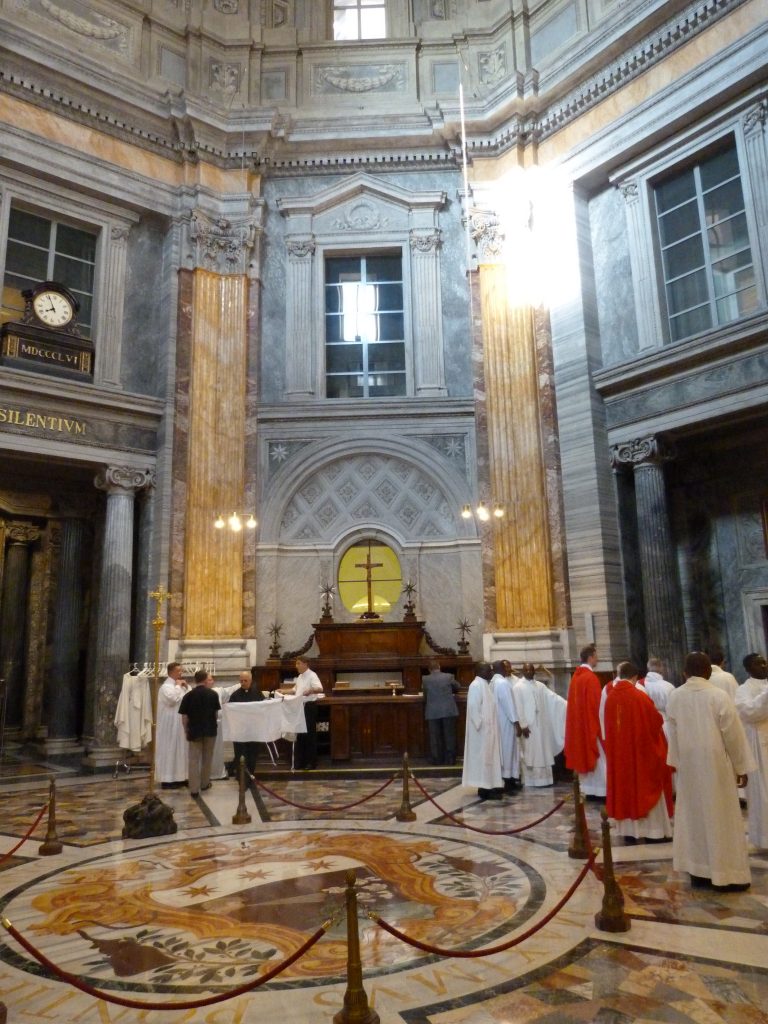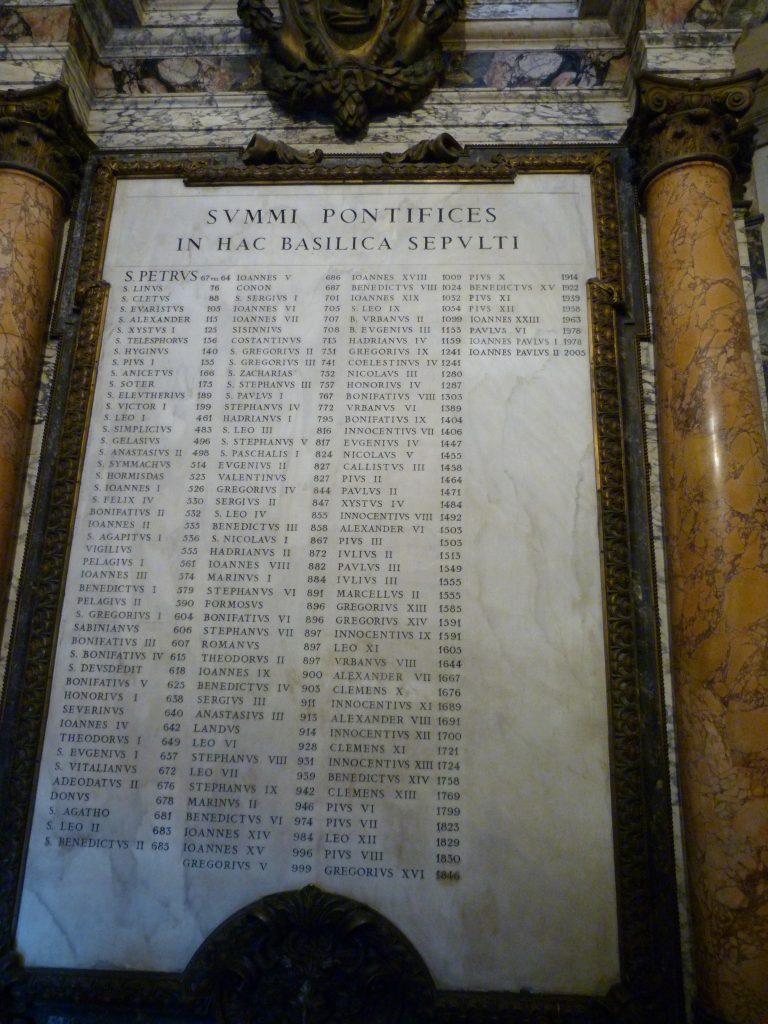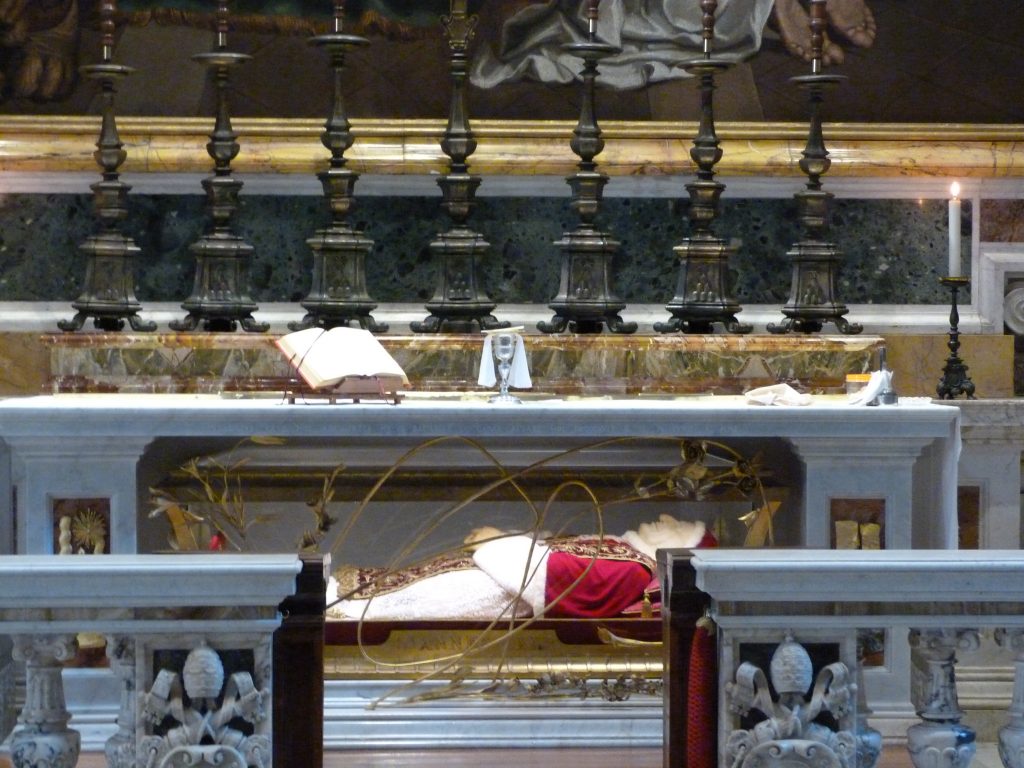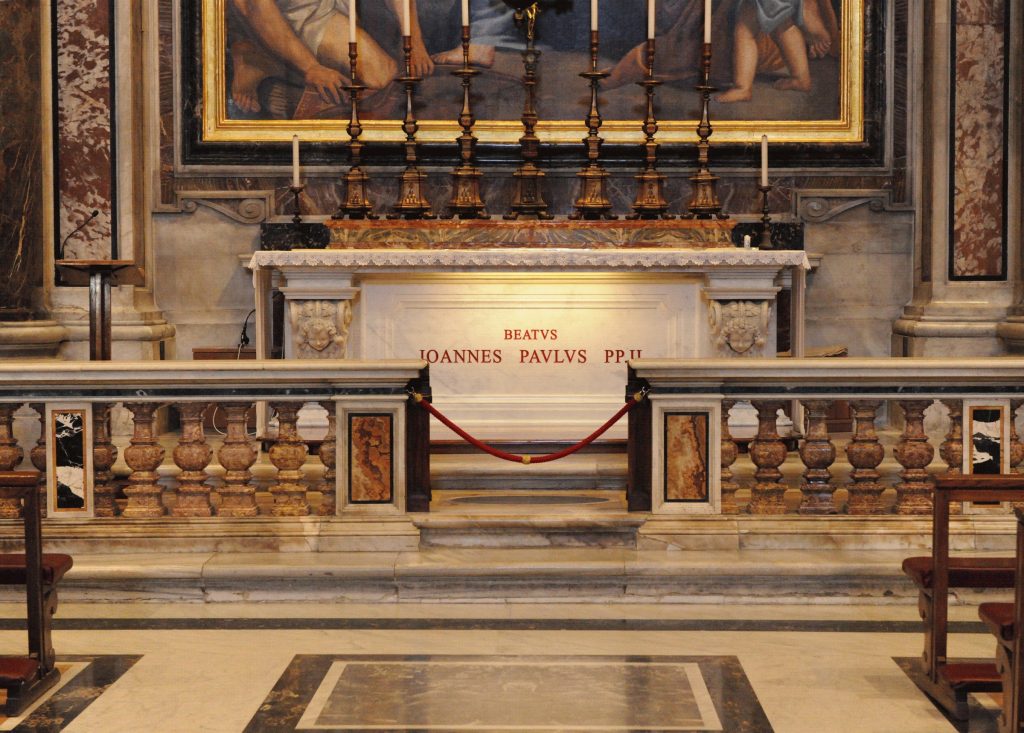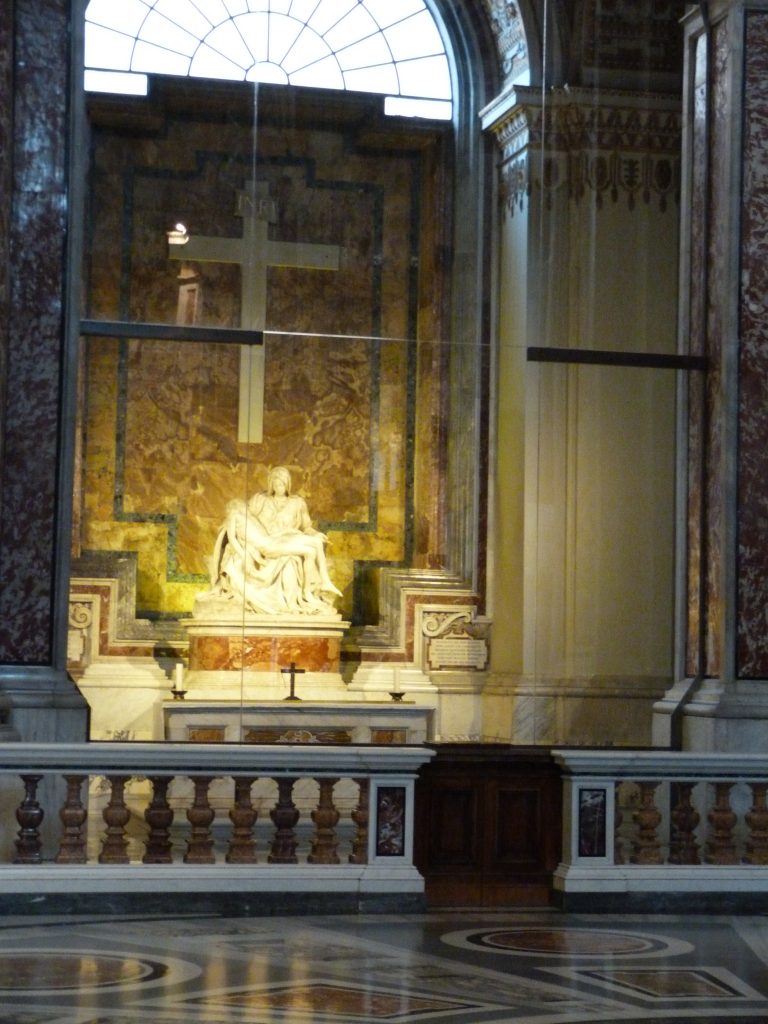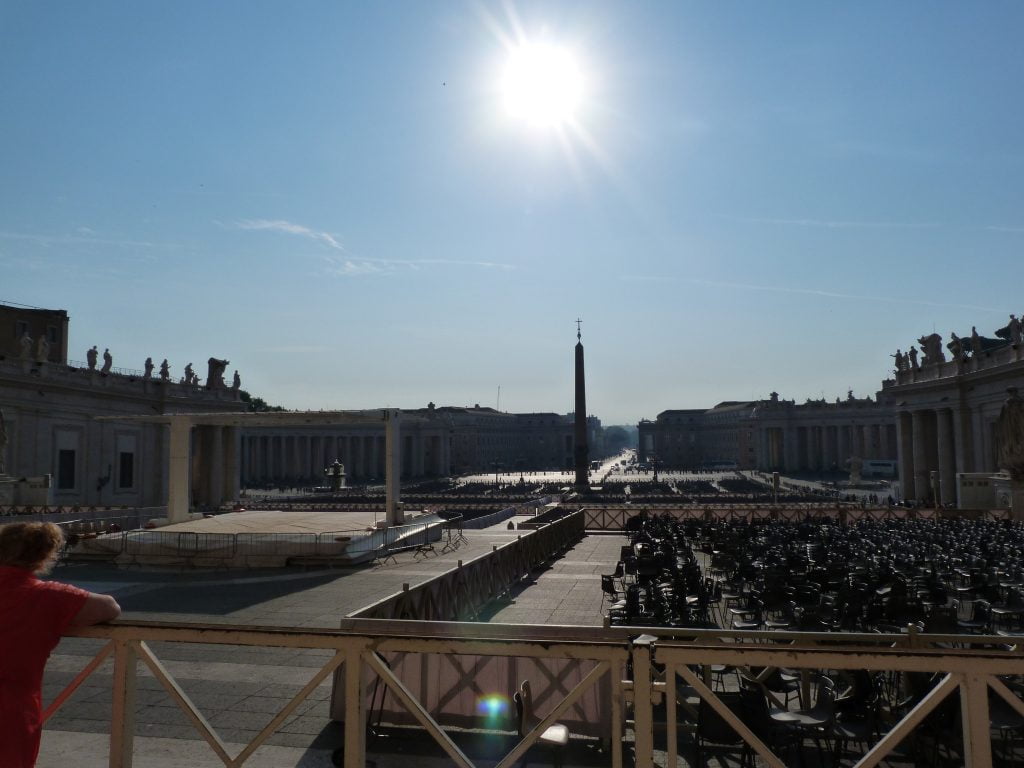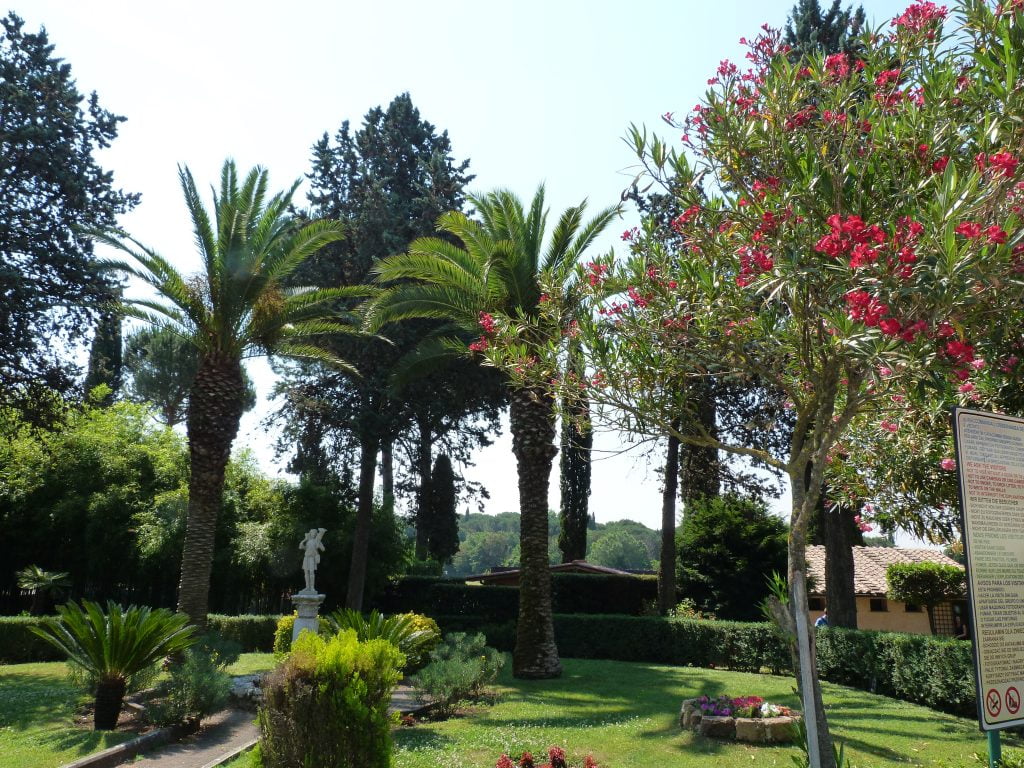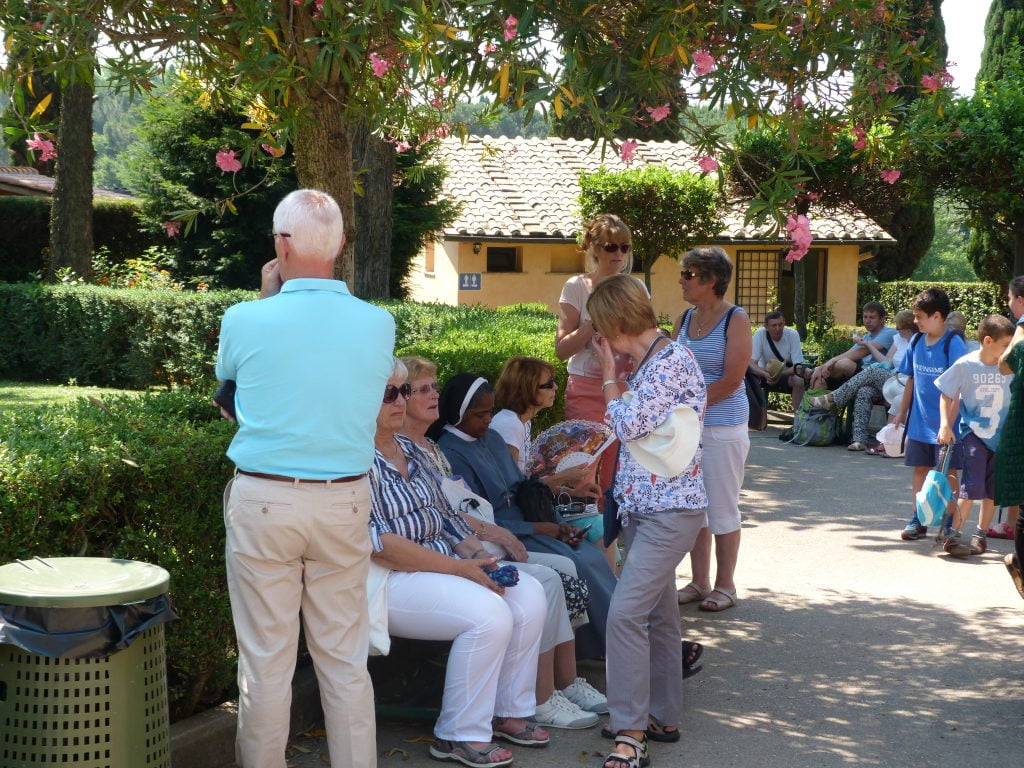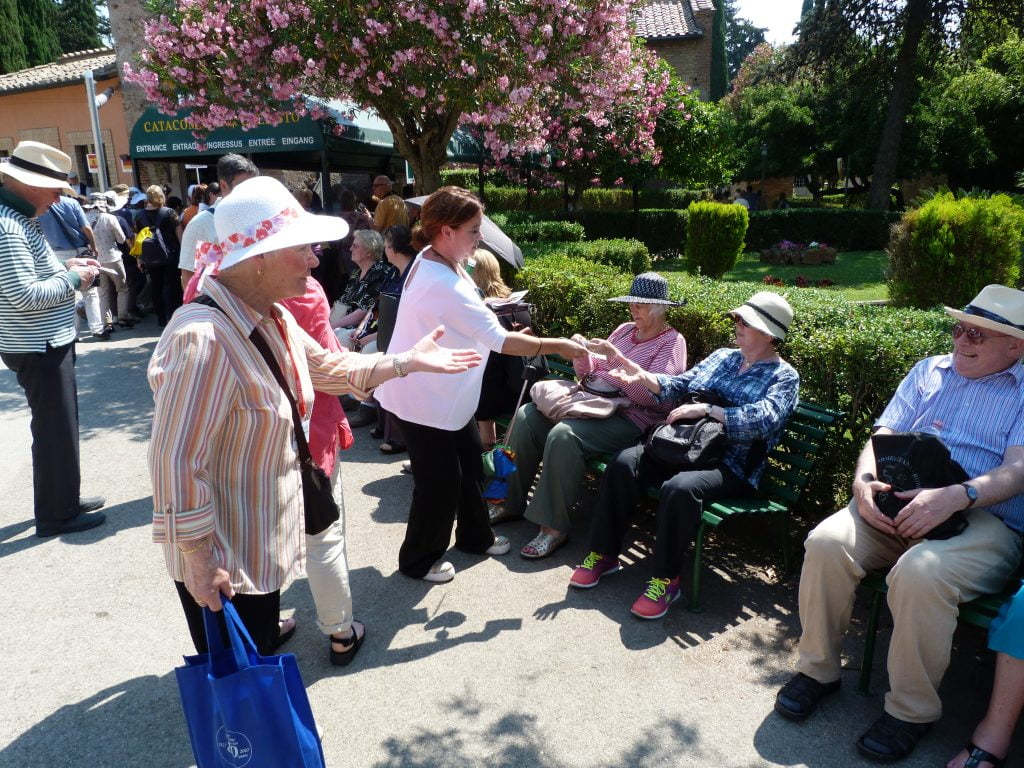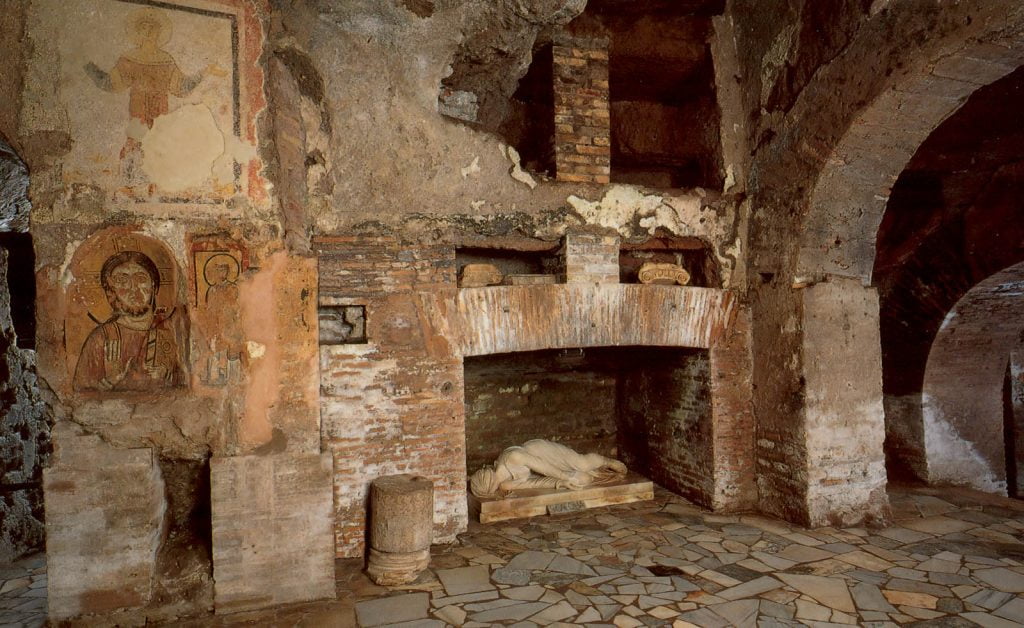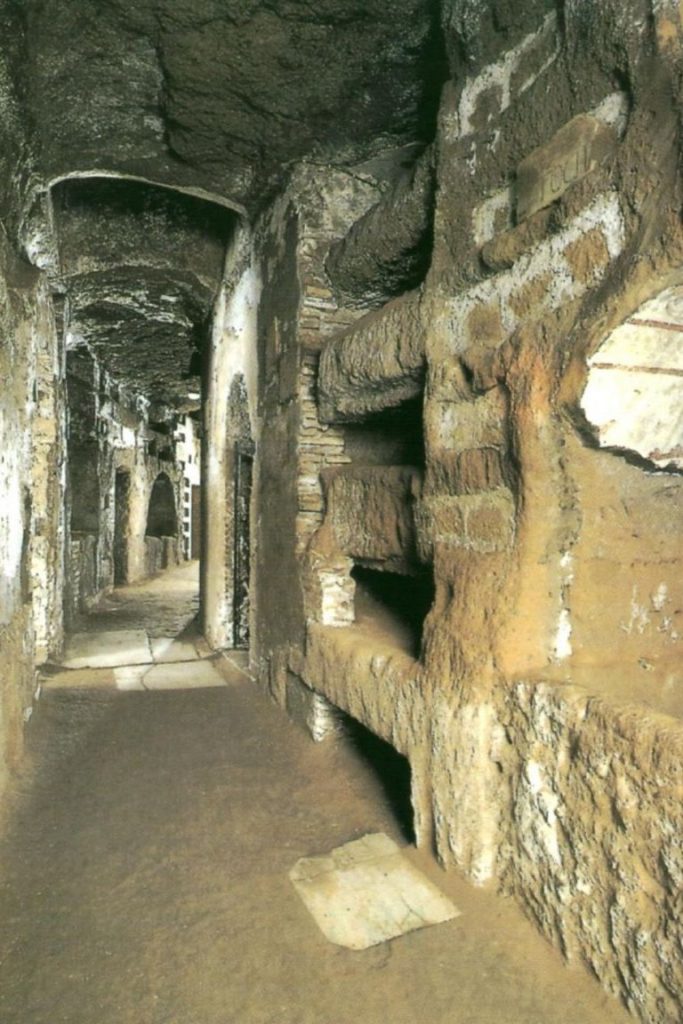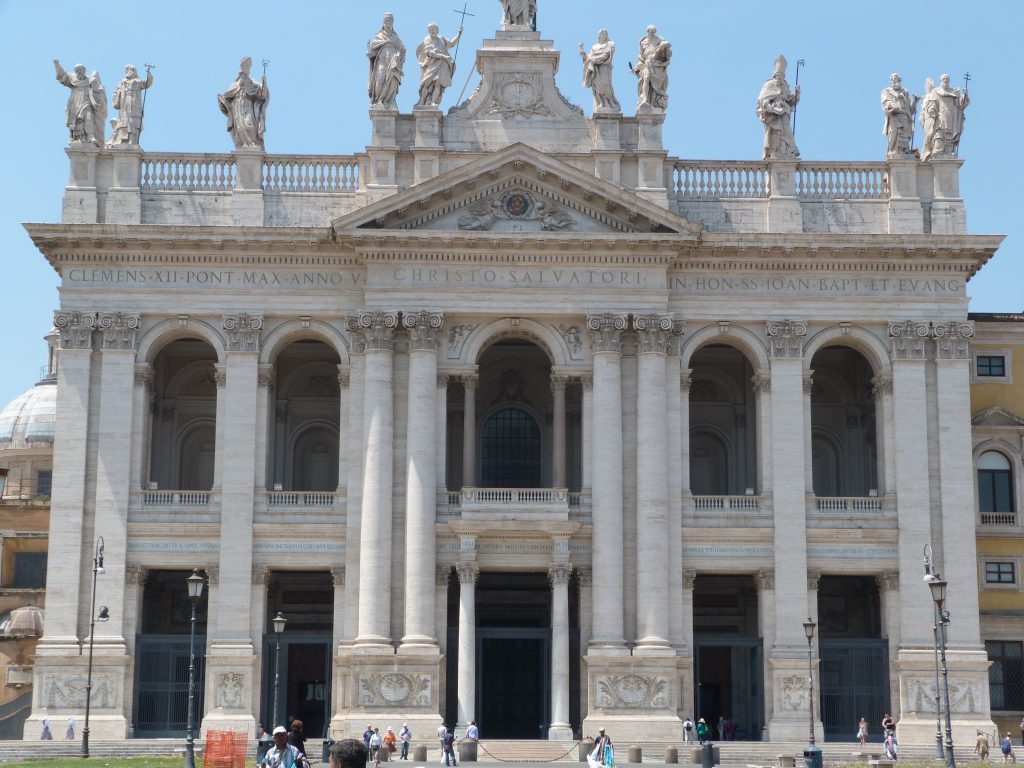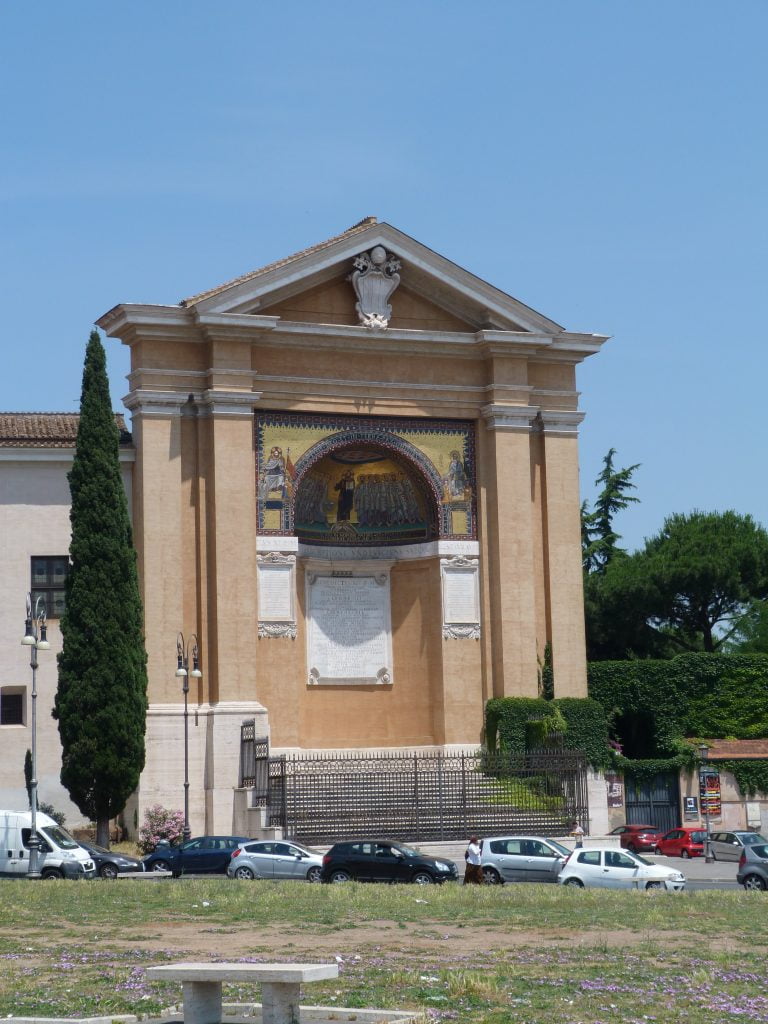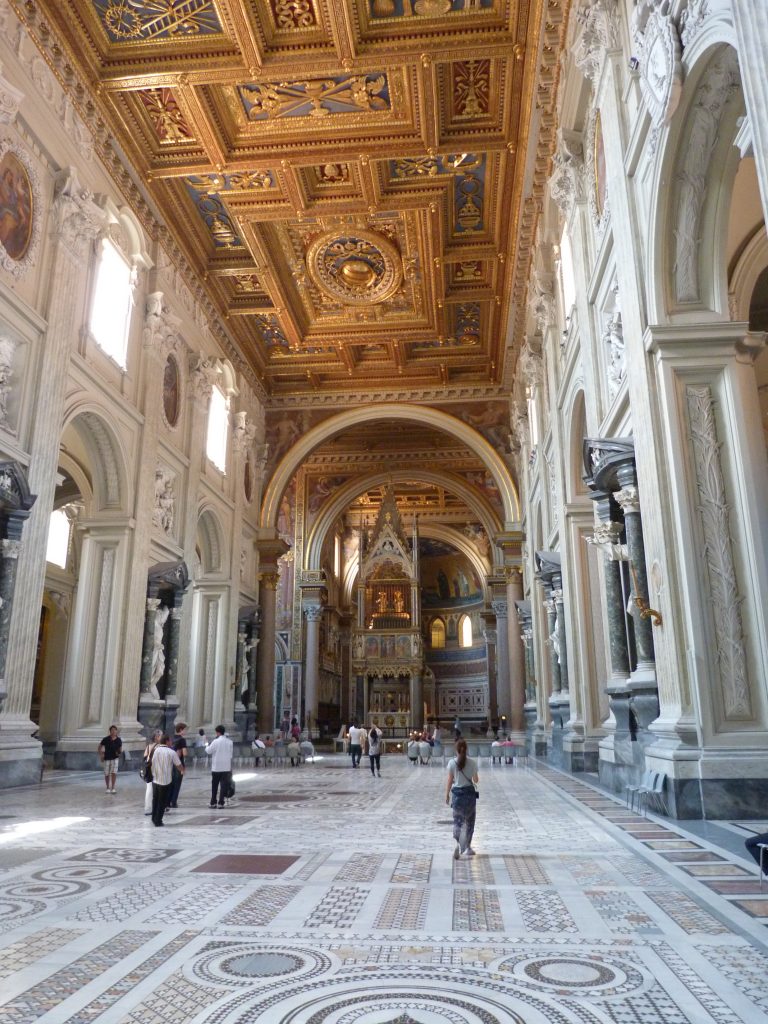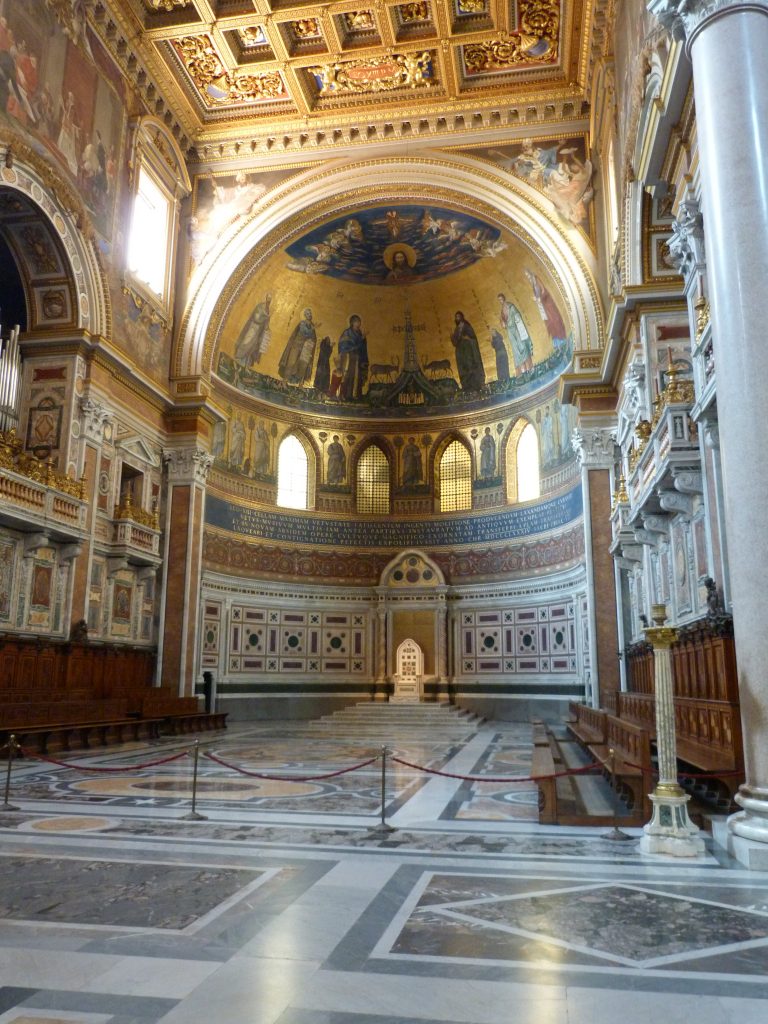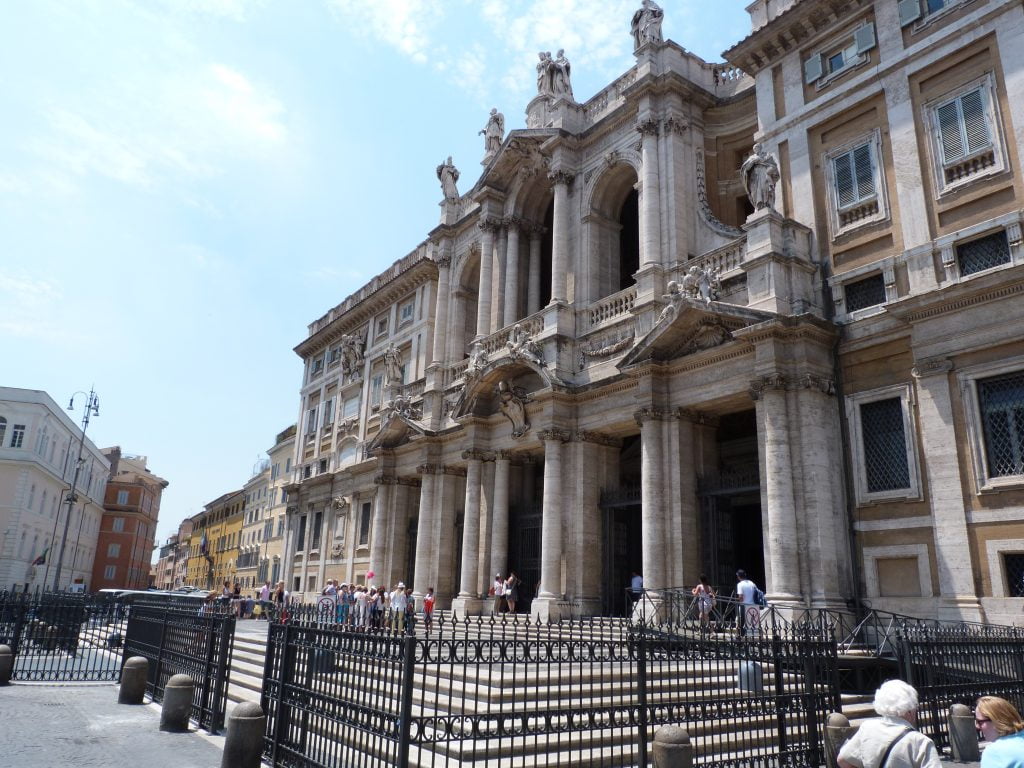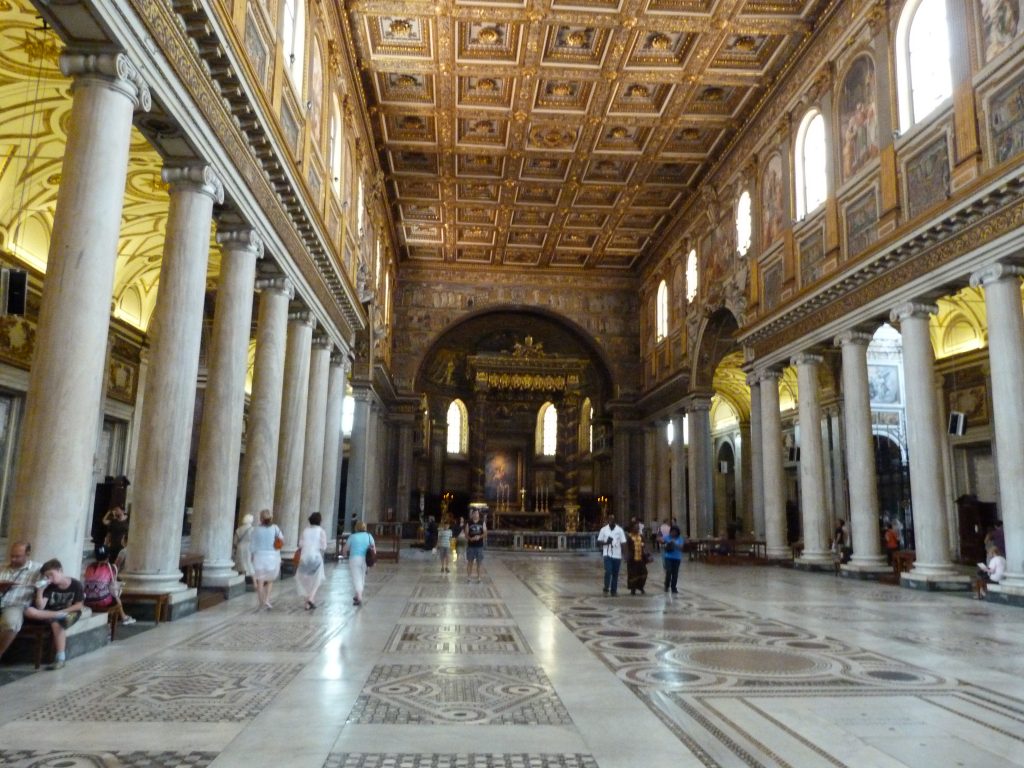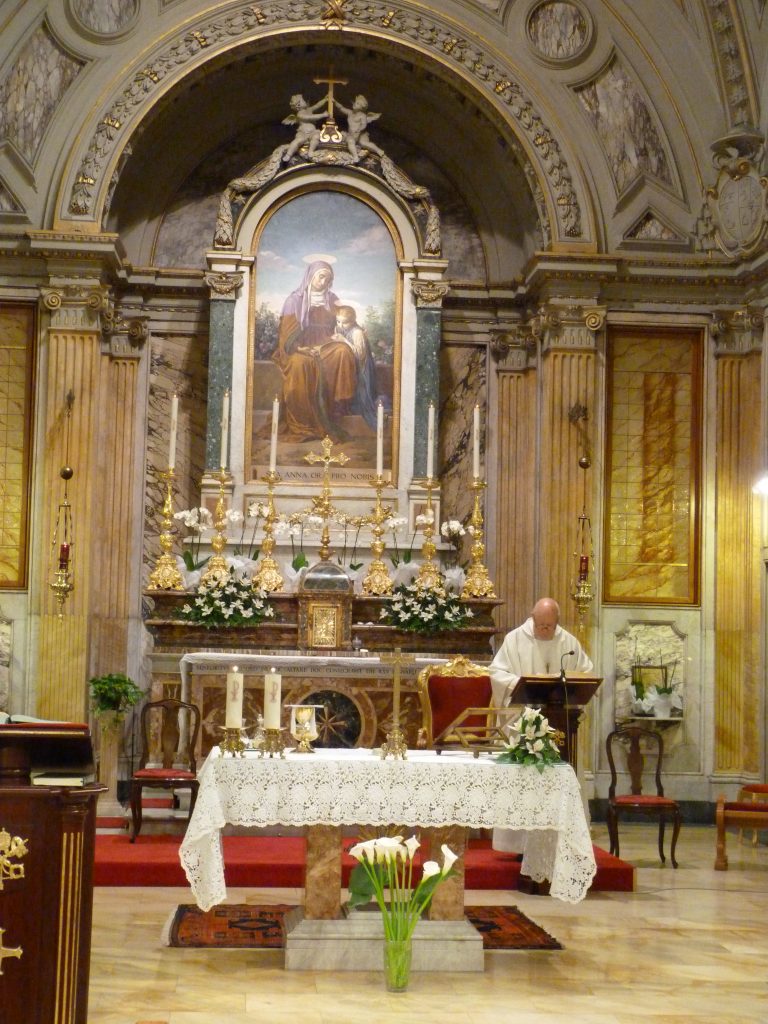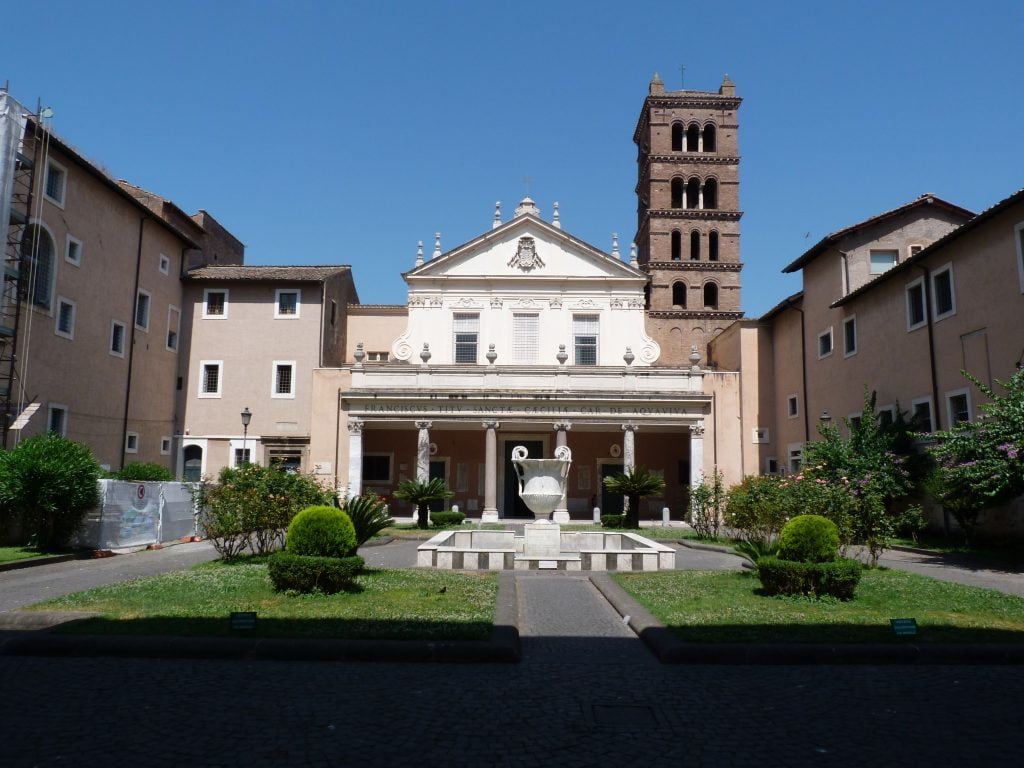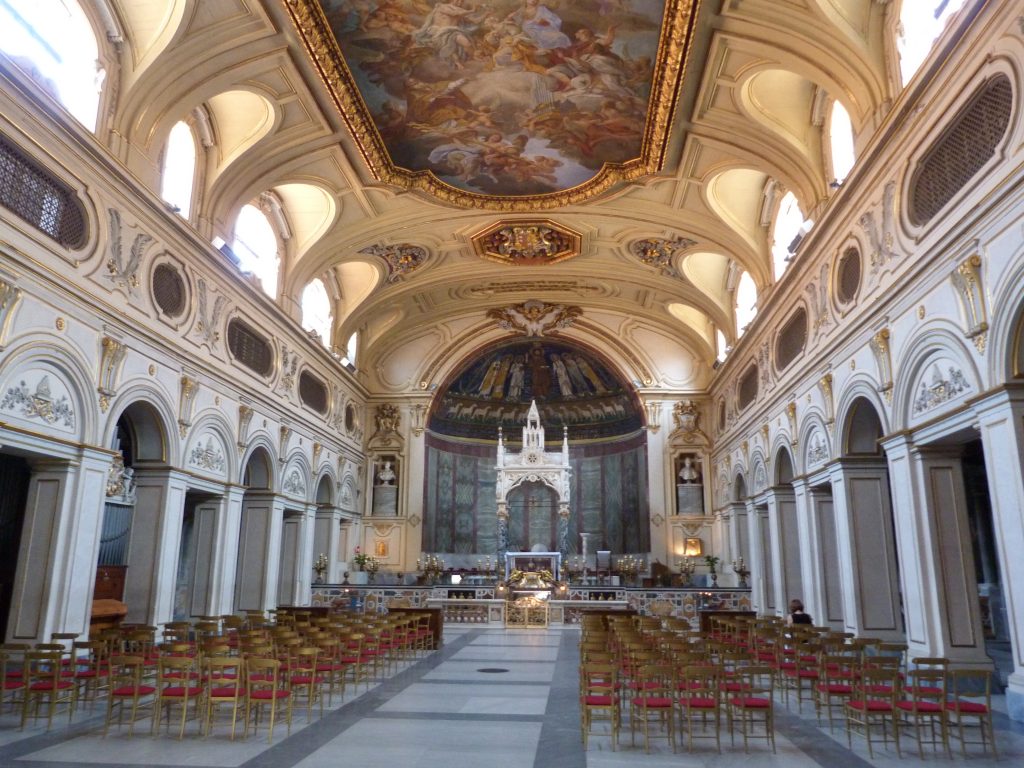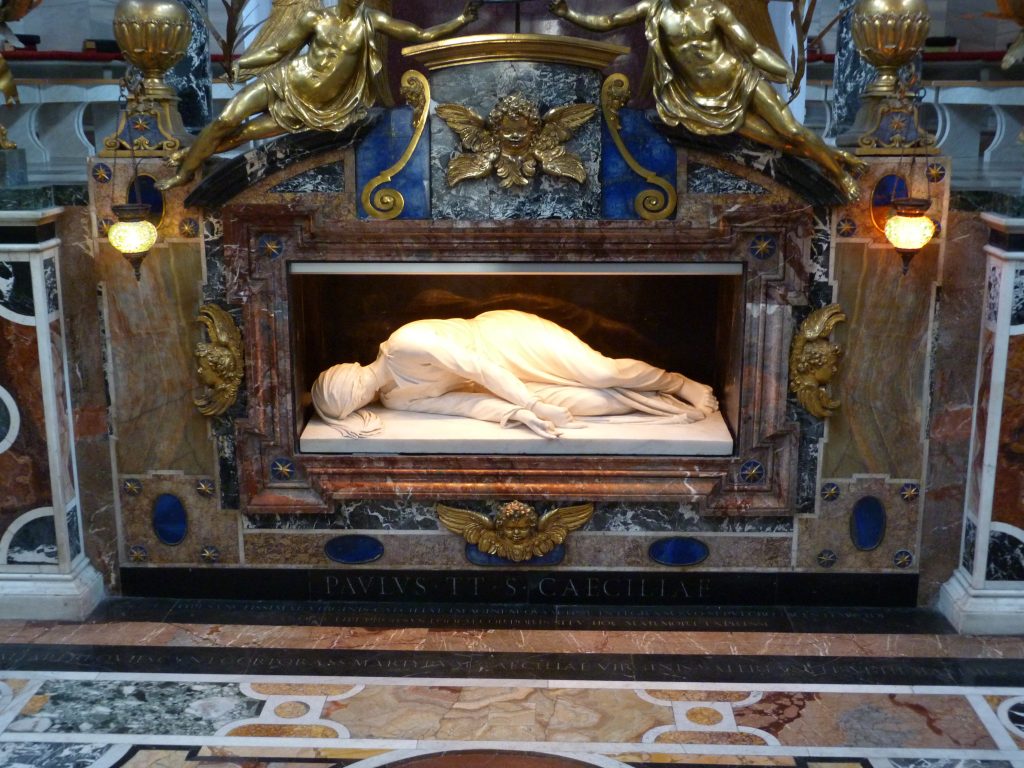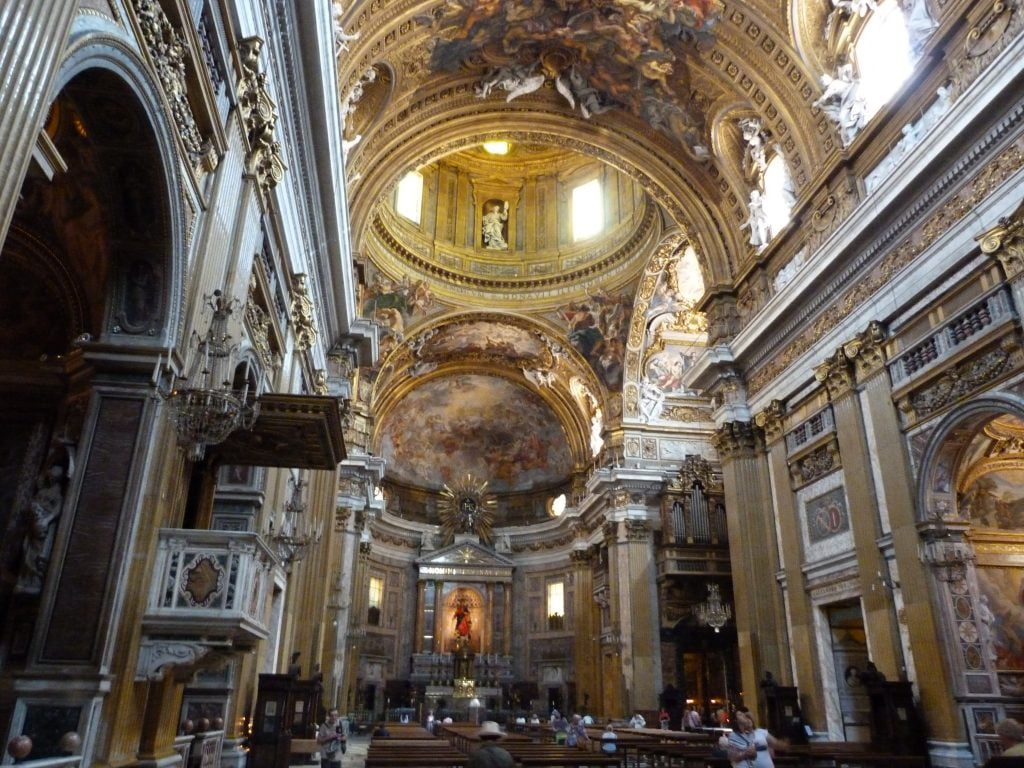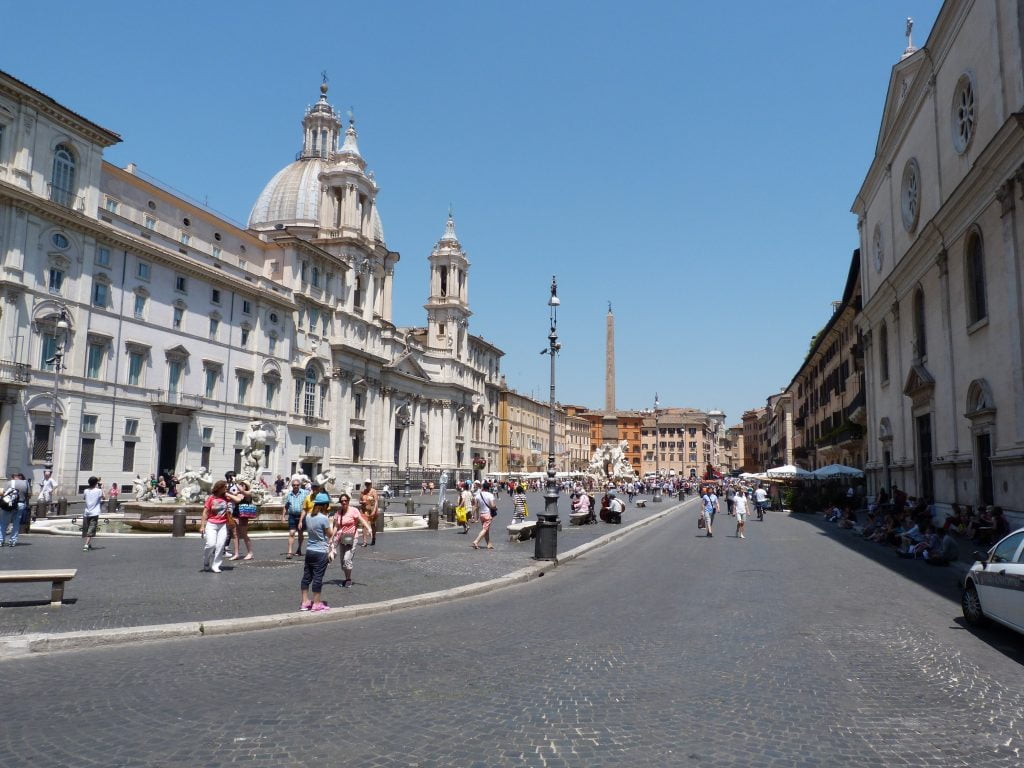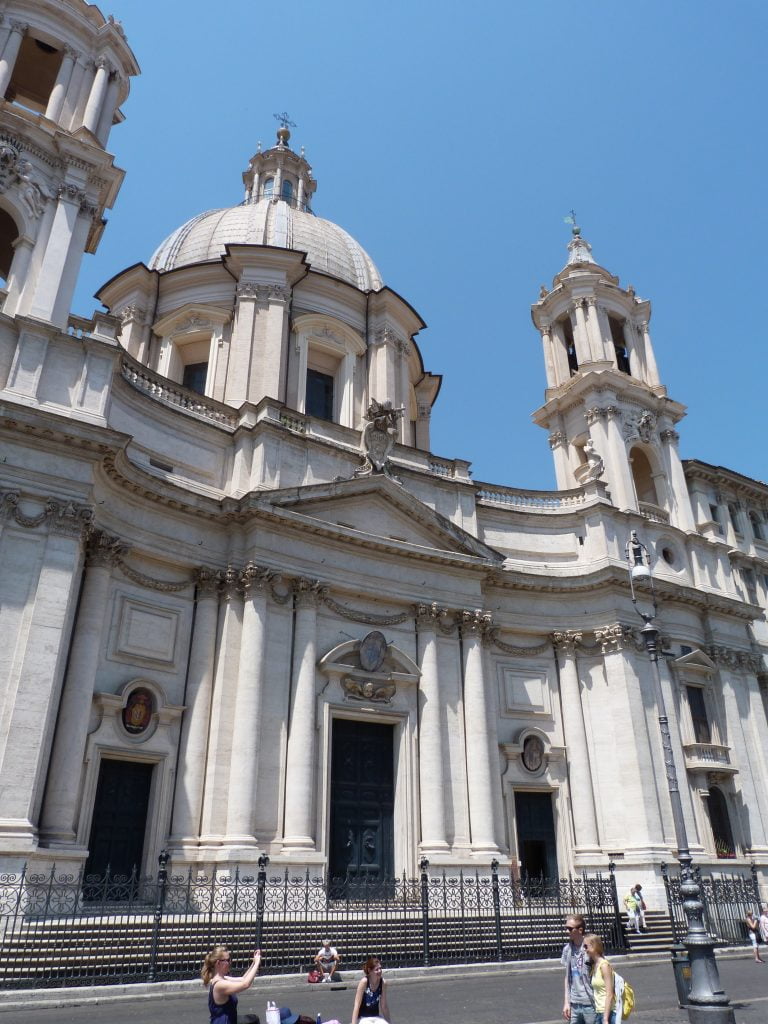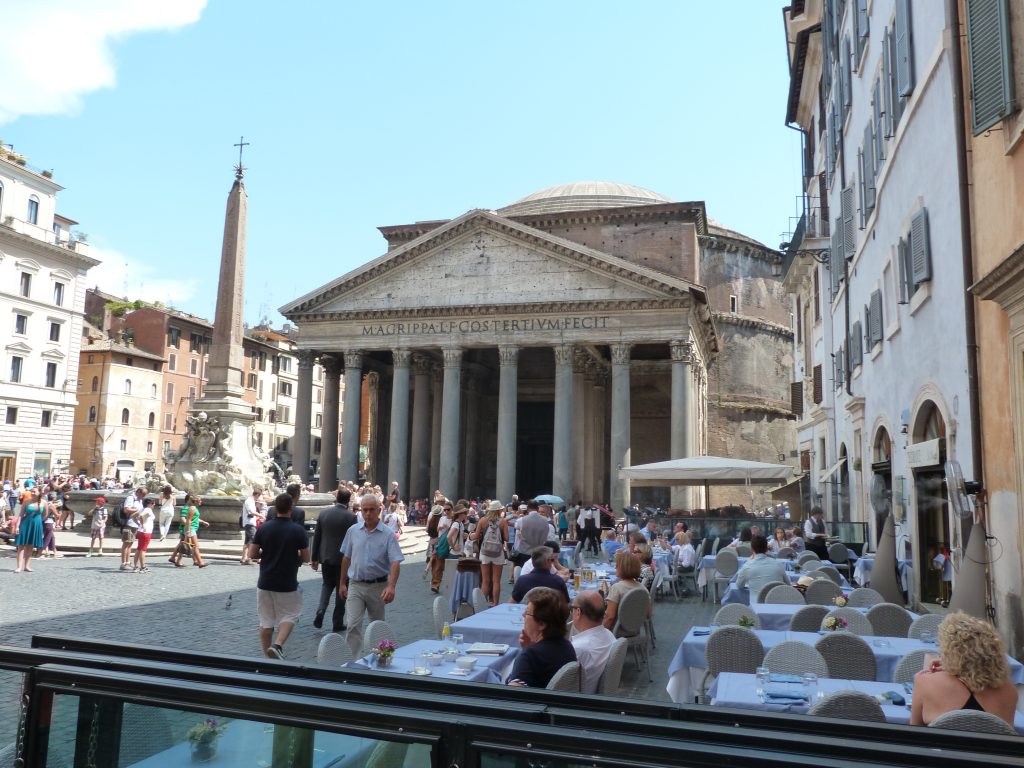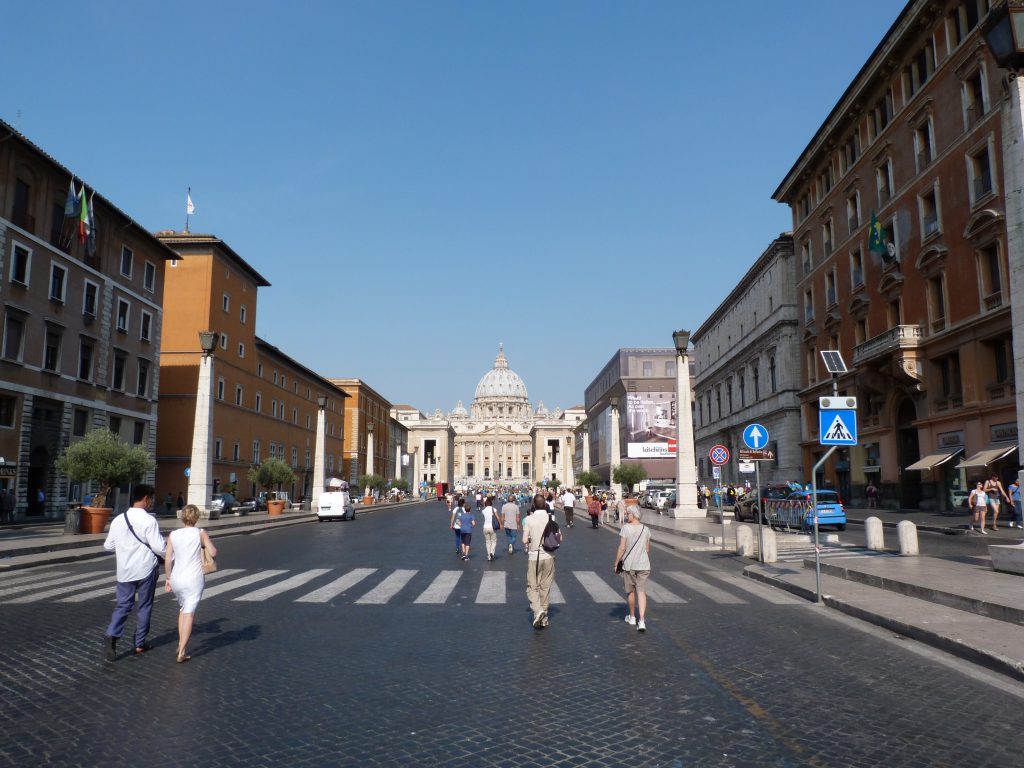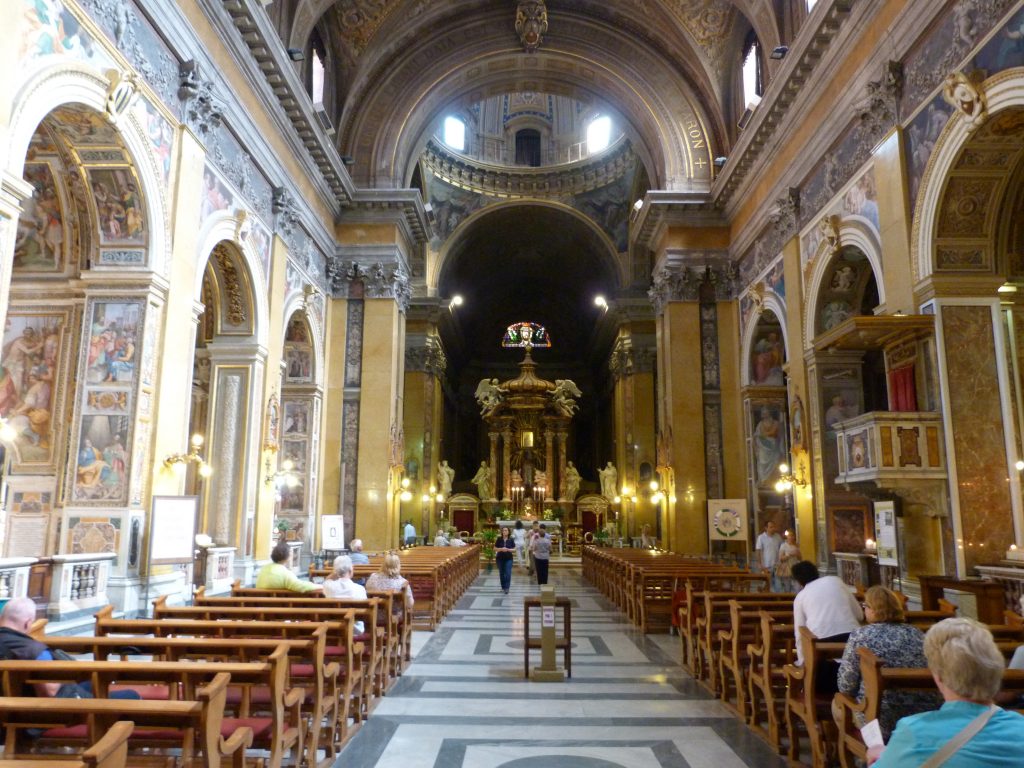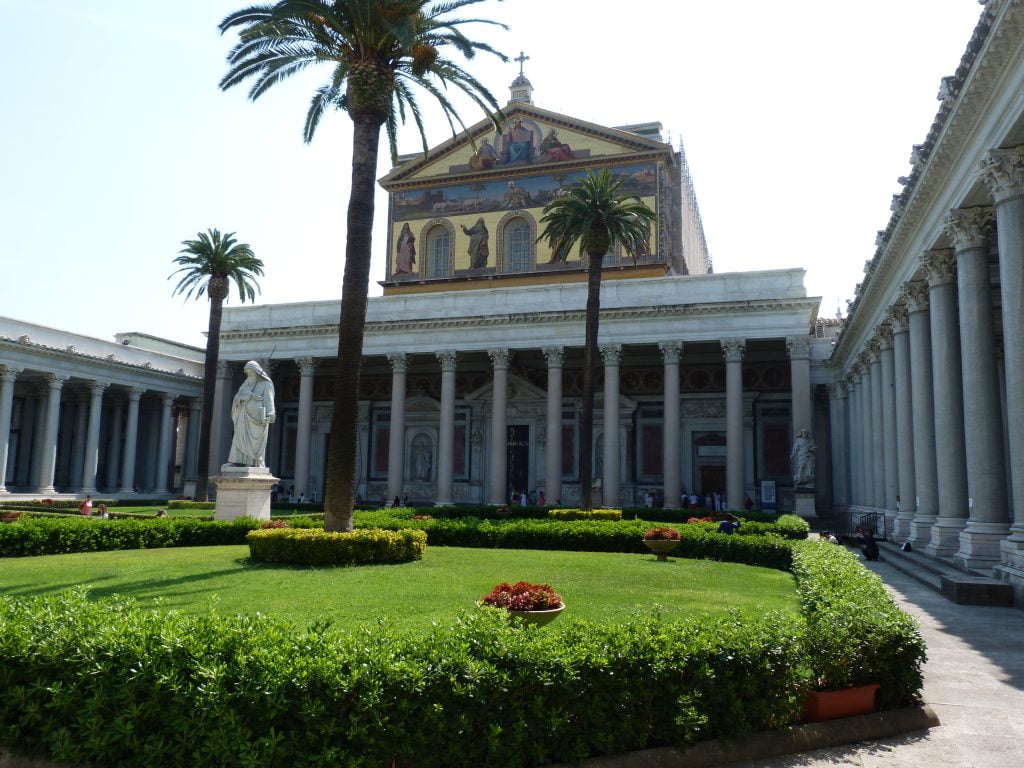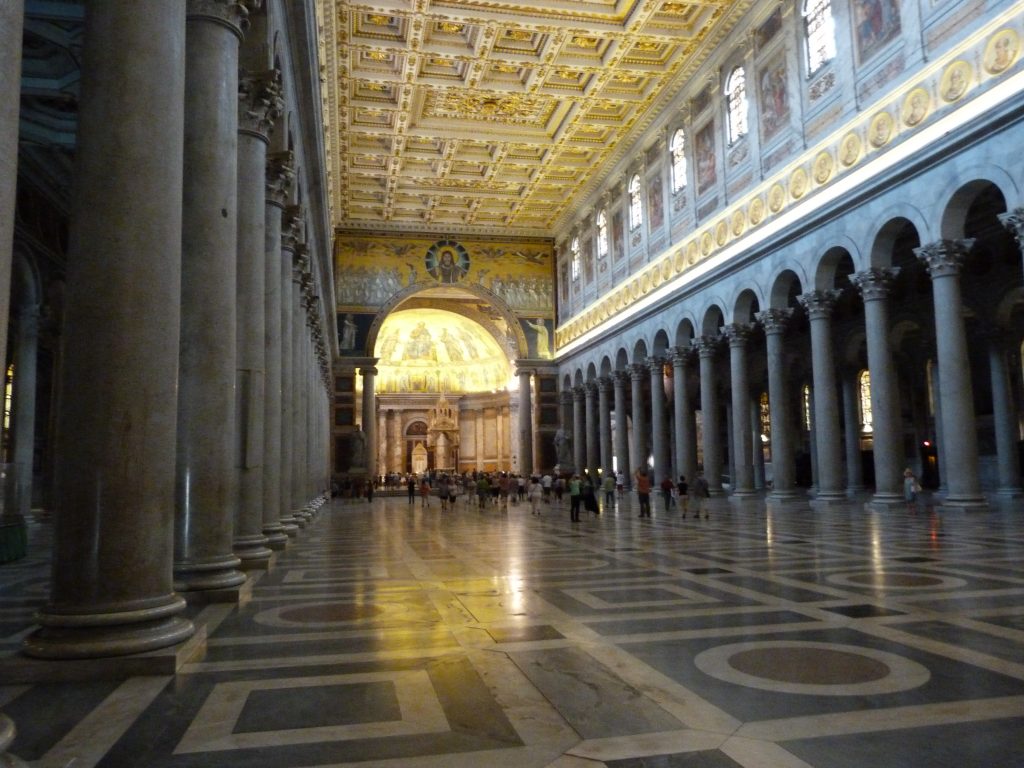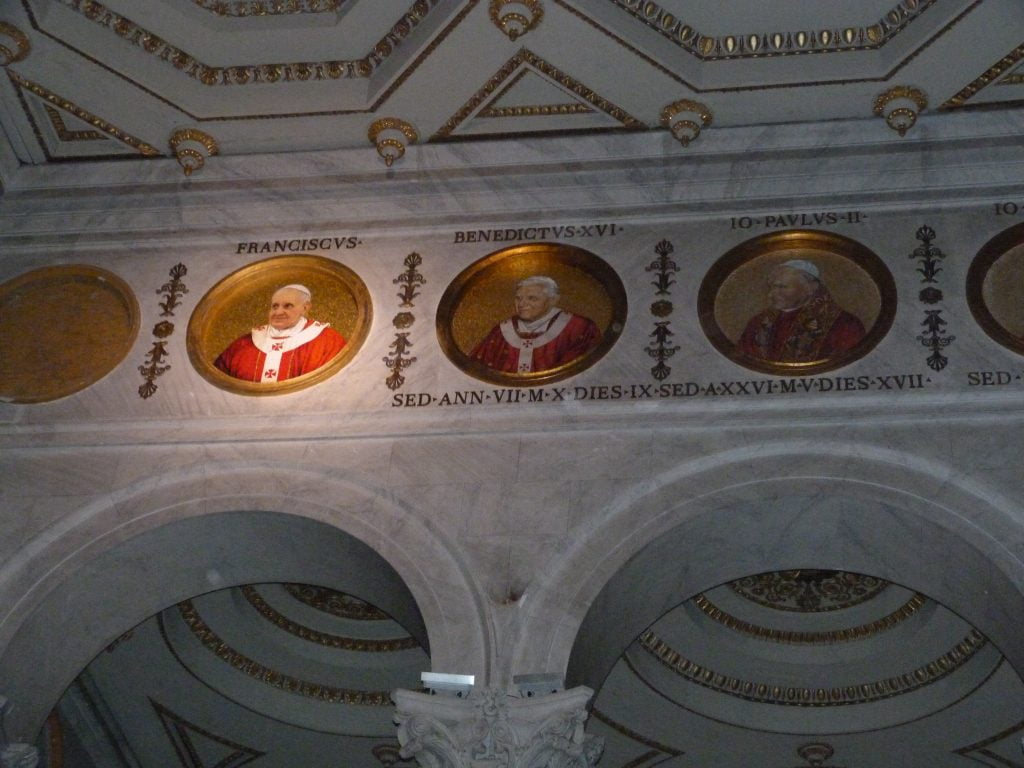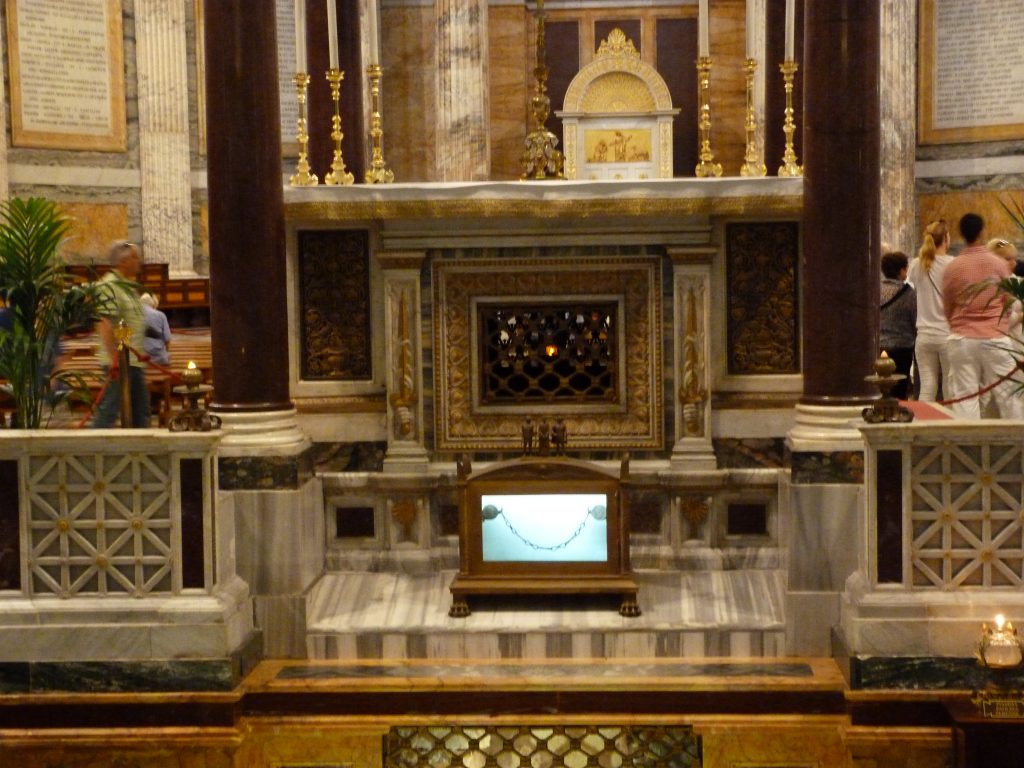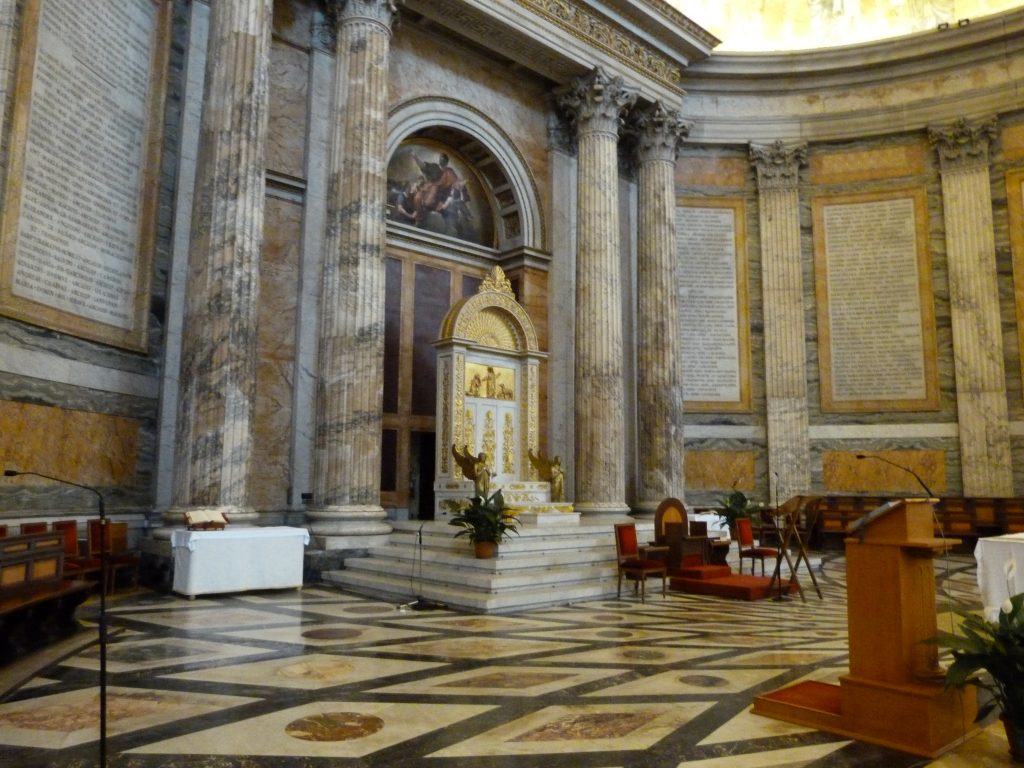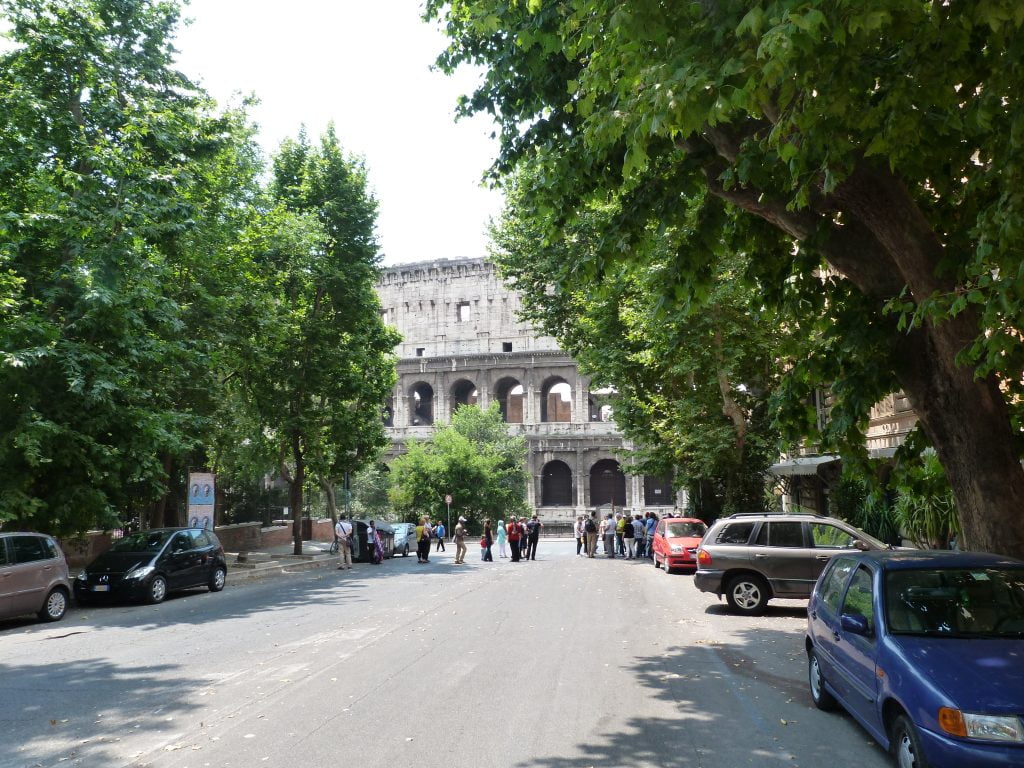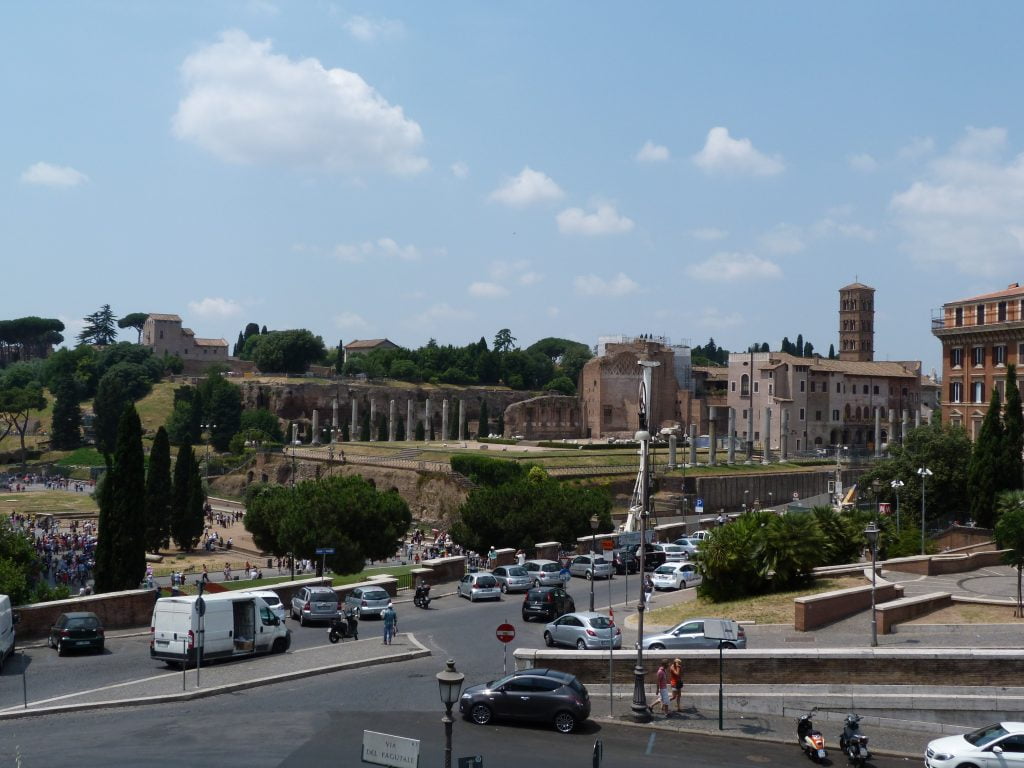Pilgrimage to Rome and Assisi – Part 1
10th – 17th June 2014
Our intrepid pilgrims set off for Rome on 10th June on what was a fine day in London. The journey though Heathrow was uneventful, and we got to our hotel (Domus Carmelitana, a Carmelite guesthouse) in Rome safely and in time for an evening meal (all be it a late evening meal).
The summary below gives an outline of our programme which included formally arranged items, as well as free time. As well as visiting holy sites, we celebrated Mass every day, along with Morning and Evening Prayer of The Church from the Divine Office.
Wednesday 11th June – Rome
Those looking for a lie in to recover from the journey were sadly disappointed, as we set off at 7am for St Peters Square for the Papal Audience. It was amazing to be part of the atmosphere of St Peters Square, and to see the Holy Father in such close quarters. At the foot of this write up is a link to the actual TV footage of our Papal Audience with the following timings of particular note:
- Drive about amongst the crowd, 0:00 – 25:00
- Sermon from, 31:58
- Pater Noster, 1:16:15
- Apostolic Blessing, 1:17:15
The bits in English:
- 27:00 – 27:40 (the Gospel)
- 45:30 – 49:10 (the summary of the sermon, with the Papal Greeting (Italian) followed by the translation in English)
We were very fortunate to be able to join the seminarians of English College for Mass in the evening, before heading back to the hotel for dinner.
Thursday 12th June – Rome
Another early rise (I was distinctly unpopular by this time I can tell you)! Leave hotel at 6.30am to head to St Peter’s Basilica (still shut to the public at this hour) for a Mass in the Irish Chapel in the catacombs beneath the High Altar. After Mass, we had ample time to tour round the basilica, and visit the tombs of the recently canonised popes, John XXIII and John Paul II, all before it opened to the public.
After breakfast back at the hotel, we went to the Catacombs of San Callisto which are the most extensive Christian catacombs of Rome. These are many kilometres long and perfectly possible to get lost in (if it were not for the Silesian priest who acted as our tour guide for the visit). The corridors below ground create an incredibly unique atmosphere as we toured past some of the over half a million niches which once contained bodies. The tombs of several early Pope’s were here, and the body of St Cecilia was found here. The spot where she died is marked with a statue in the form of how she was found (incorrupt), the original of which is with her remains in the Basilica and Convent of St Cecilia in the Trastevere where she was transferred (built over her home).
From here we went to the Papal Basilica of St John Lateran, the cathedral church of the Diocese of Rome and the official ecclesiastical seat of the Bishop of Rome. It is the oldest and ranks first among the four Papal Basilicas (Major Basilicas) of Rome (having the cathedra of the Bishop of Rome). What remains of the Lateran Palace surrounds the building (residence of the early popes) and it is still possible to see the grandeur of what would have stood here.
The final stop of the day was at the Papal Basilica of St Mary Major and is the largest Catholic Marian church in Rome. Among the Patriarchal Basilicas of Rome, St. Mary Major is the only one to have kept its original structure, though it has been enhanced over the course of years. Special details within the church render it unique including the fifth century mosaics of the central nave, the triumphal arch dating back to the pontificate of Pope Sixtus III (432-440) and the apsidal mosaic executed by the Franciscan friar Jacopo Torriti at the order of Pope Nicholas IV (1288-1292).
Friday 13th June – Rome
Mass this morning was in St Anne’s Church, the parish church to The Vatican, or to give it its correct title, Saint Anne of the Pontifical Grooms. Dating from 1565, the church is the parish church of the State of Vatican City and is placed under the jurisdiction of the Vicariate of the Vatican City and is located beside the Porta Sant’Anna (Saint Anne’s Gate), an international border crossing between Vatican City State and Italy.
A visit to the Basilica and convent of St Cecilia in Trastavere which was built over the home of St Cecilia, an upper class woman who owned a house on the site and was martyred in the 3rd century. Her body was found incorrupt in 1599 in the Catacombs of San Callisto. Cecilia is one of the most popular of Roman saints. She lived in the 3rd century and the first legend of her life was written in the 6th century. A noblewoman from a senatorial family, Cecilia took a personal vow of virginity and pledged her life to God. Unfortunately for her, Cecilia’s parents still married her off. On her wedding night, Cecilia told her new husband (Valerian of Trastevere) about her pledge of virginity and persuaded him to be baptized. Valerian’s brother Tibertius and another man named Maximus were converted and baptized as well, and the three men began a Christian ministry of giving alms to the poor and arranging for proper burial of martyrs. Eventually they became martyrs themselves for refusing to worship Roman gods. After burying her husband and his brother, Cecilia was persecuted as well. According to her legend, she was first locked in the caldarium of her own bathhouse for several days. This failed to suffocate her as planned; in fact, she sang throughout the ordeal (Cecilia is the patron saint of music). Next a soldier was sent to behead her, but after three hacks with an axe she was still alive. However, she died of her wounds three days later.
The Jesuit Church, the Church of St. Ignatius of Loyola at Campus Martius was our next stop. Built in Baroque style between 1626 and 1650, the church functioned originally as the chapel of the adjacent Roman College, that moved in 1584 to a new larger building and was renamed the Pontifical Gregorian University.
The Church of St Agnes in Agony is a 7th century church in the Piazza Navona and contains the shrine of the virgin martyr St. Agnes, and catacombs. Saint Agnes was a member of Roman nobility born in 291 and raised in a Christian family. She suffered martyrdom at age 13 during the reign of the Eastern Roman Emperor Diocletian, on 21st January, 304. According to tradition, the prefect Sempronius wished her to marry his son, and on her refusal condemned her to death. Roman law did not permit the execution of virgins, so he ordered her to be raped beforehand, but her honour was miraculously preserved. St. Agnes was led out to be burned at the stake, but the bundle of wood would not burn. The officer in charge of the troops drew his sword and struck off her head. Saint Agnes is the patron saint of young girls. Her skull is preserved in a glass tabernacle.
Piazza Navona is built on the site of the Stadium of Domitian, built in 1st century AD, and follows the form of the open space of the stadium. This was a welcome place to stop for lunch and a cold beer (sorry, I mean lemonade)!
A visit to the Pantheon competed the day. It was built as a Roman temple dedicated to all the gods of pagan Rome. As the brick stamps on the side of the building reveal it was built and dedicated between A.D 118 and 125. The Pantheon exists today in such amazing form because the Byzantine emperor Phocas gave it to Pope Boniface the VIII in A.D 608 and it was used as a church ever since. The Pantheon has been in use since the time it was built.
Saturday 14th June – Rome
Mass this morning was in Santa Maria in Traspontina which is a parish and titular church of ancient foundation in the rione Borgo (14th historic district (rione) of Rome) dedicated to the Blessed Virgin Mary, with its main entrance on the Via della Conciliazione.
St Paul outside the Walls was our next stop, and completed visits to the four main Basilicas (Papal) of Rome. At the beginning of the 4th century, with the end of the persecutions and the promulgation of the Edicts of Tolerance in favour of Christianity, Emperor Constantine ordered the excavation of the cella memoriae, the place where Christians venerated the memory of Saint Paul the Apostle, beheaded under Nero around 65-67 A.D. Above his grave, located along the Ostiense Way, about two kilometers outside the Aurelian Walls surrounding Rome, Constantine built a Basilica which was consecrated by Pope Sylvester in 324. However, on the night of 15th July 1823, a fire destroyed this unique testimony to the Paleo-Christian, Byzantine, Renaissance and Baroque periods. The Basilica was reconstructed identically to what it had been before, utilizing all the elements which had survived the fire. In 1840 Pope Gregory XVI consecrated the Altar of the Confession and the Transept.
Visits to the ancient Roman Forum and the Coliseum completed the day during a coach tour of the major sights of Rome.
This completed our visit to Rome. The next morning we departed for Assisi, some 2.5 hours drive away in time for 11am Mass – please see part 2.
Link to the General Papal Audience
Andrew Richardson
